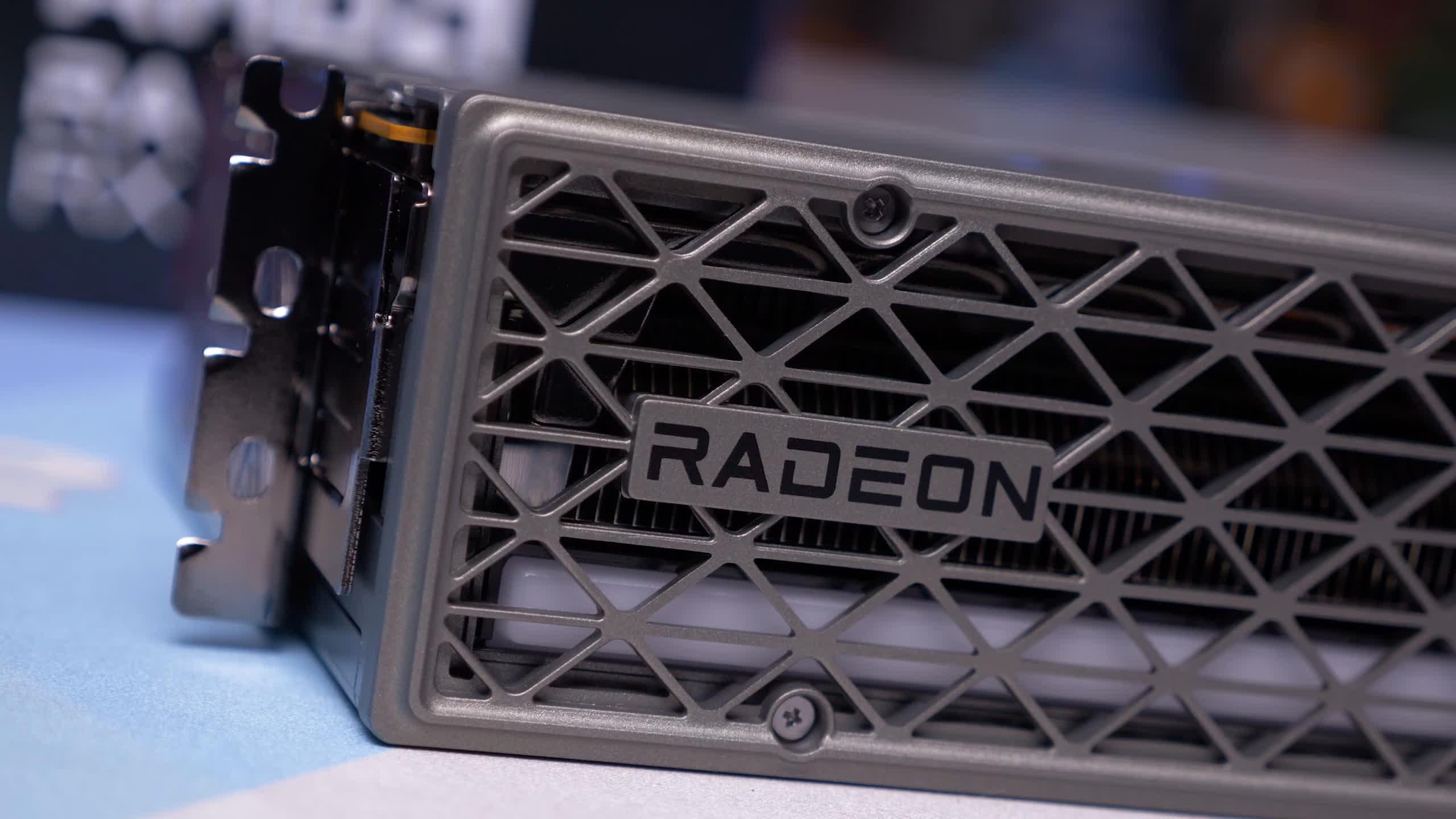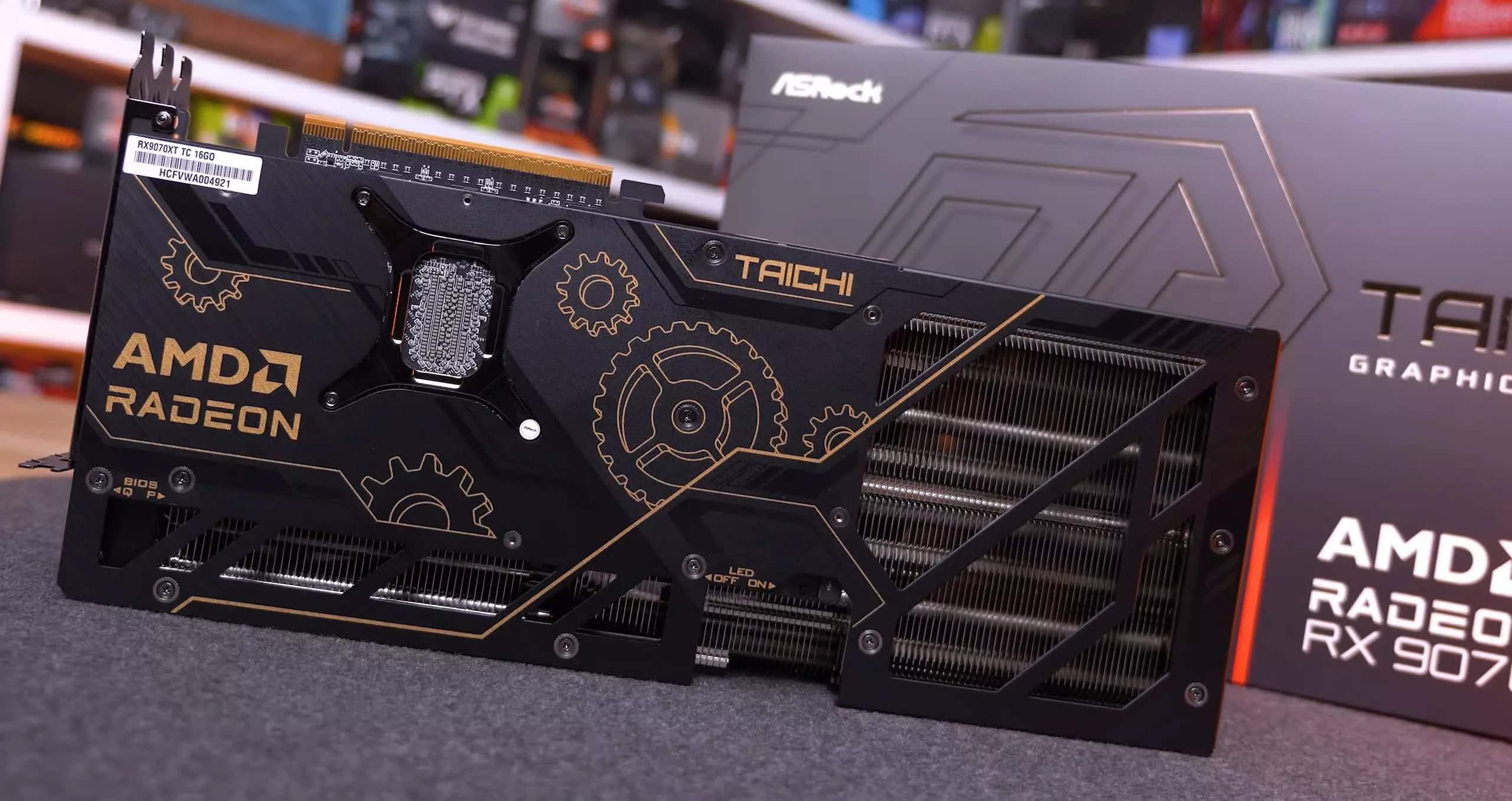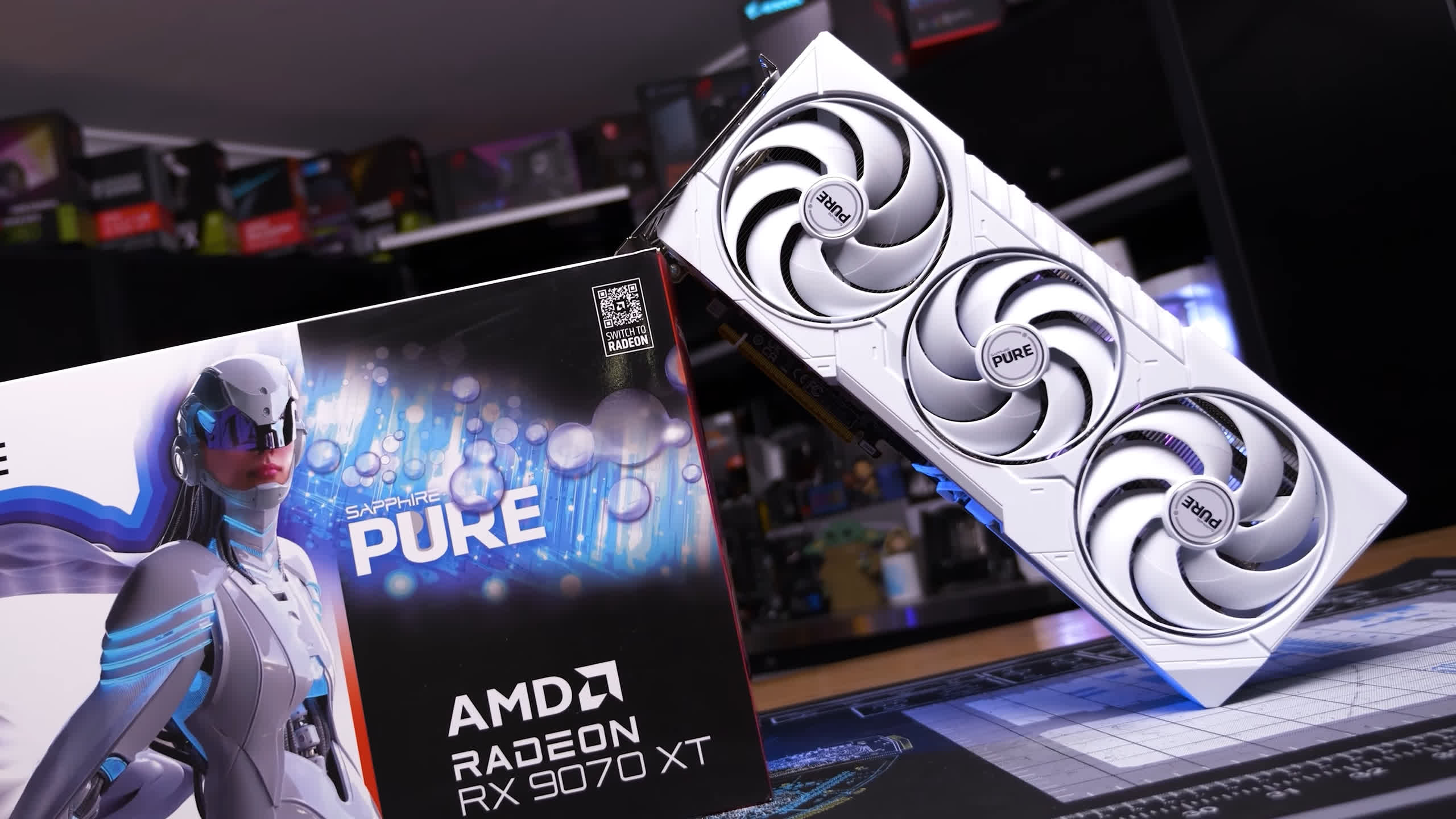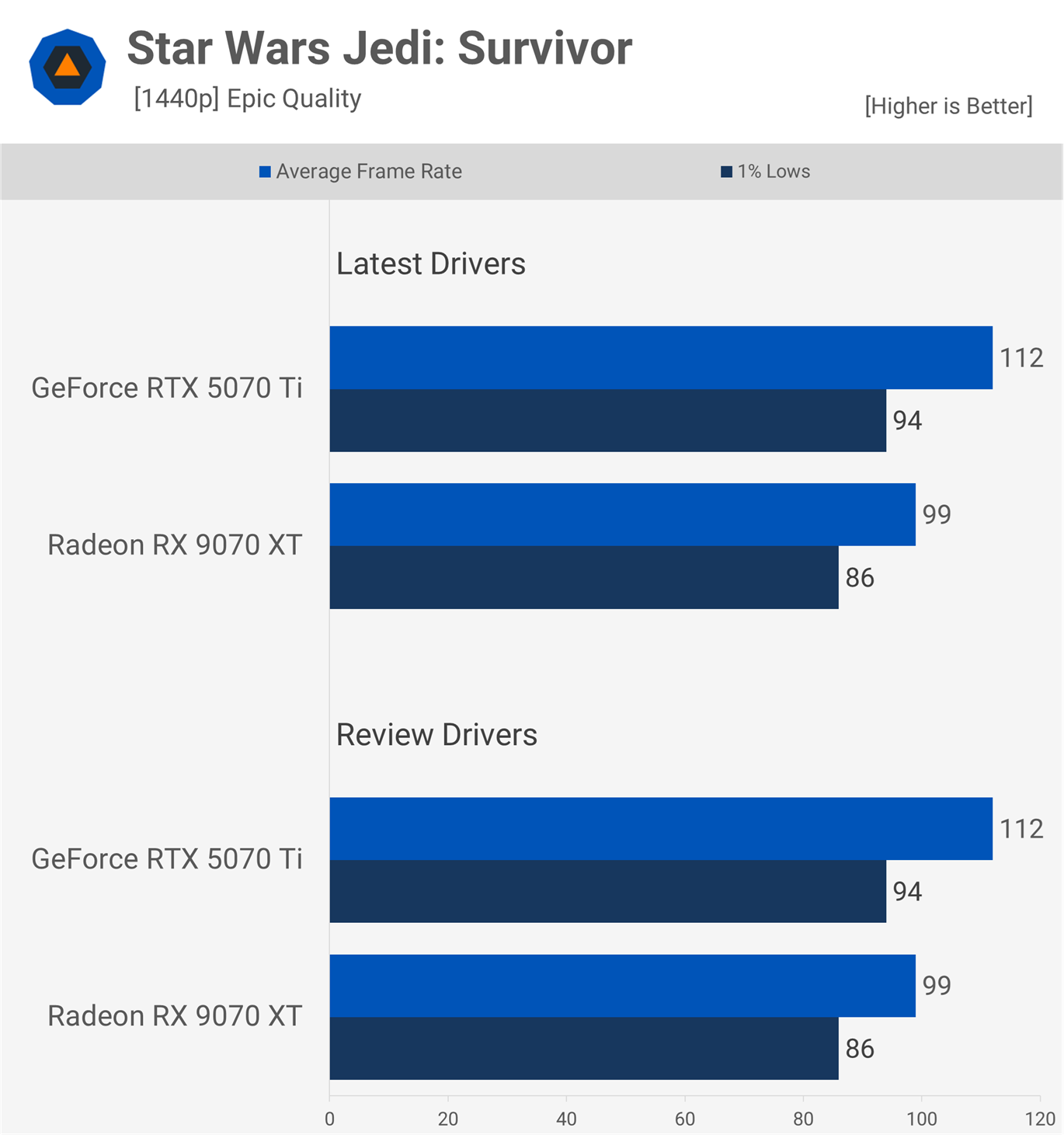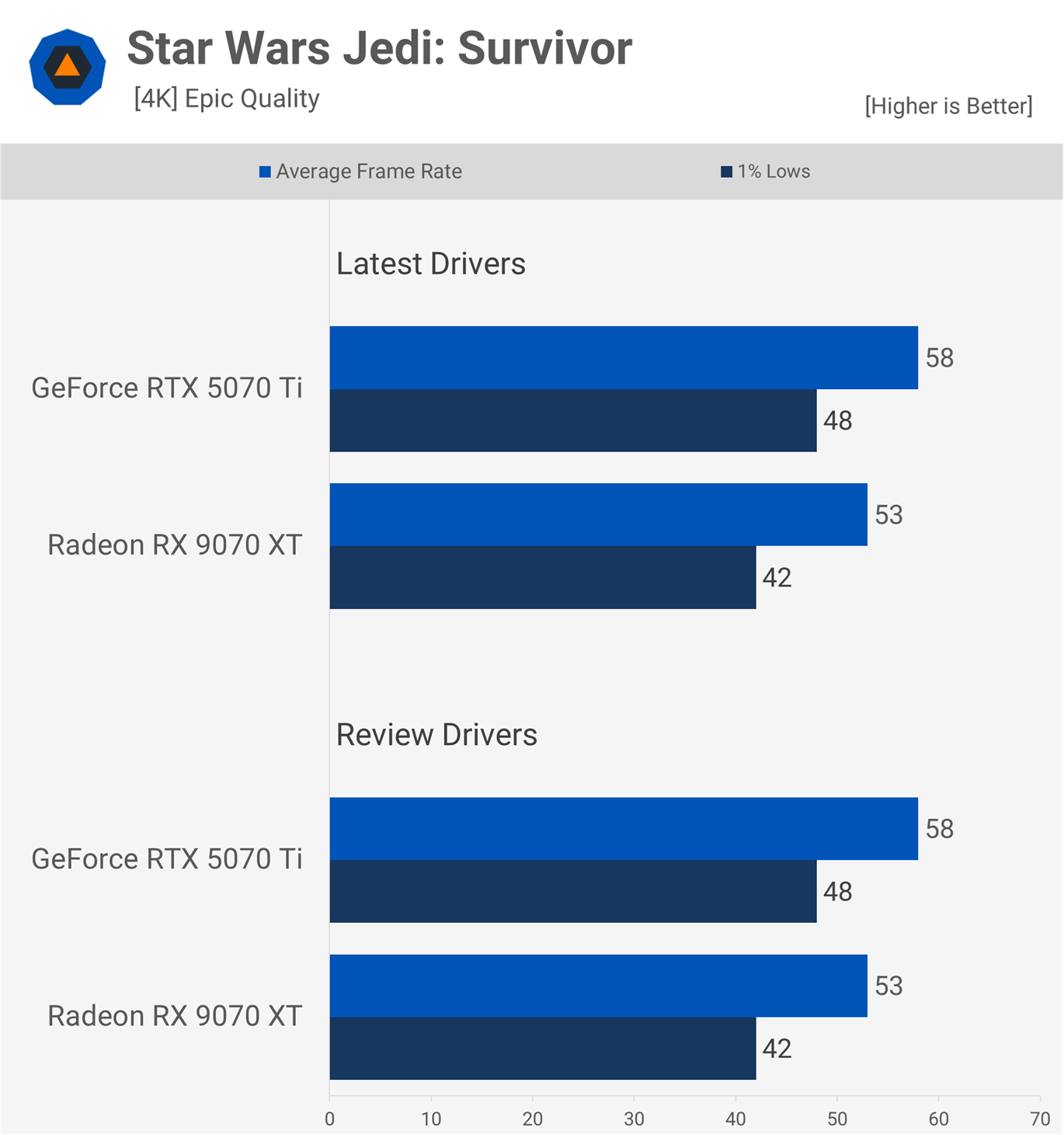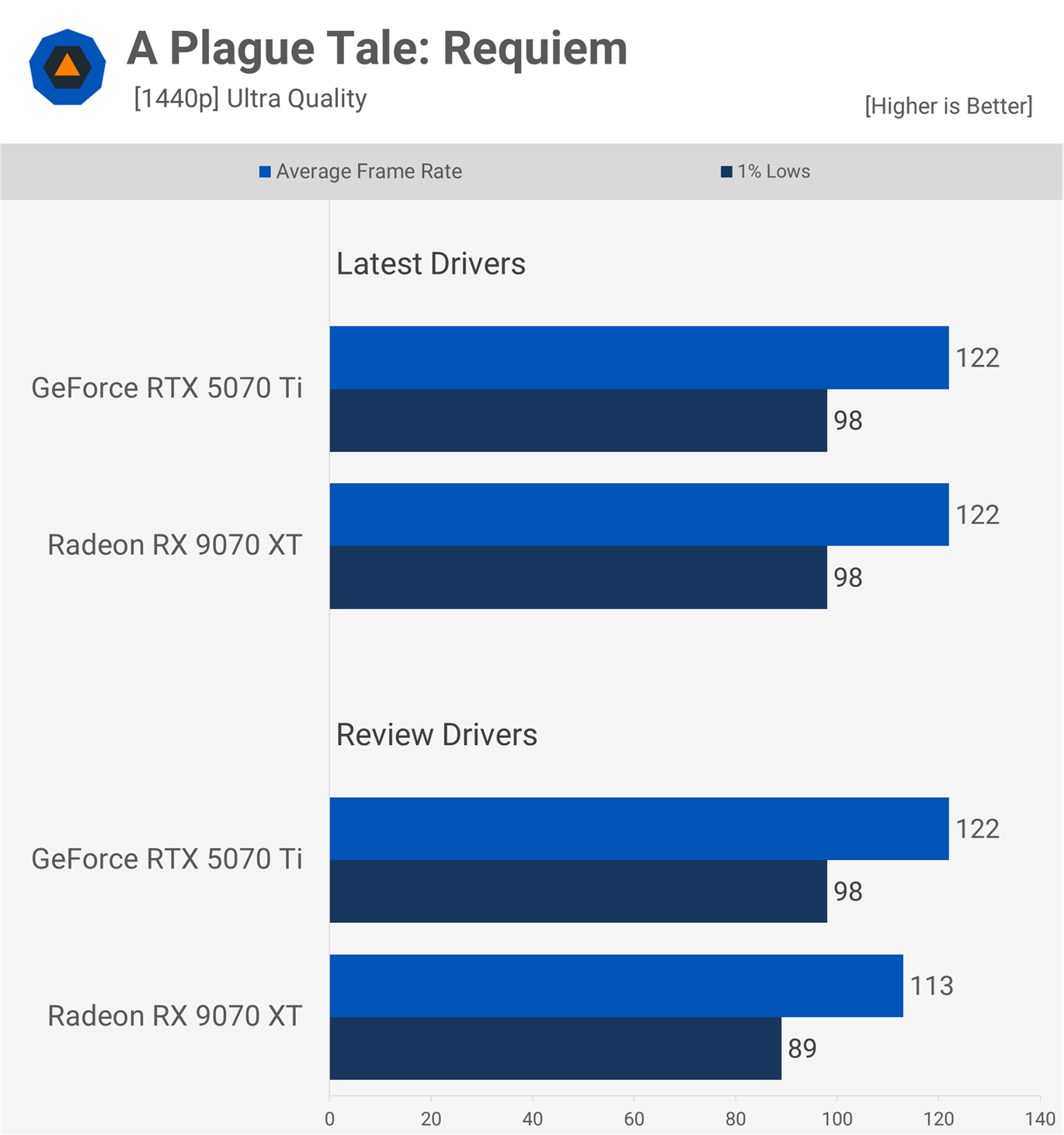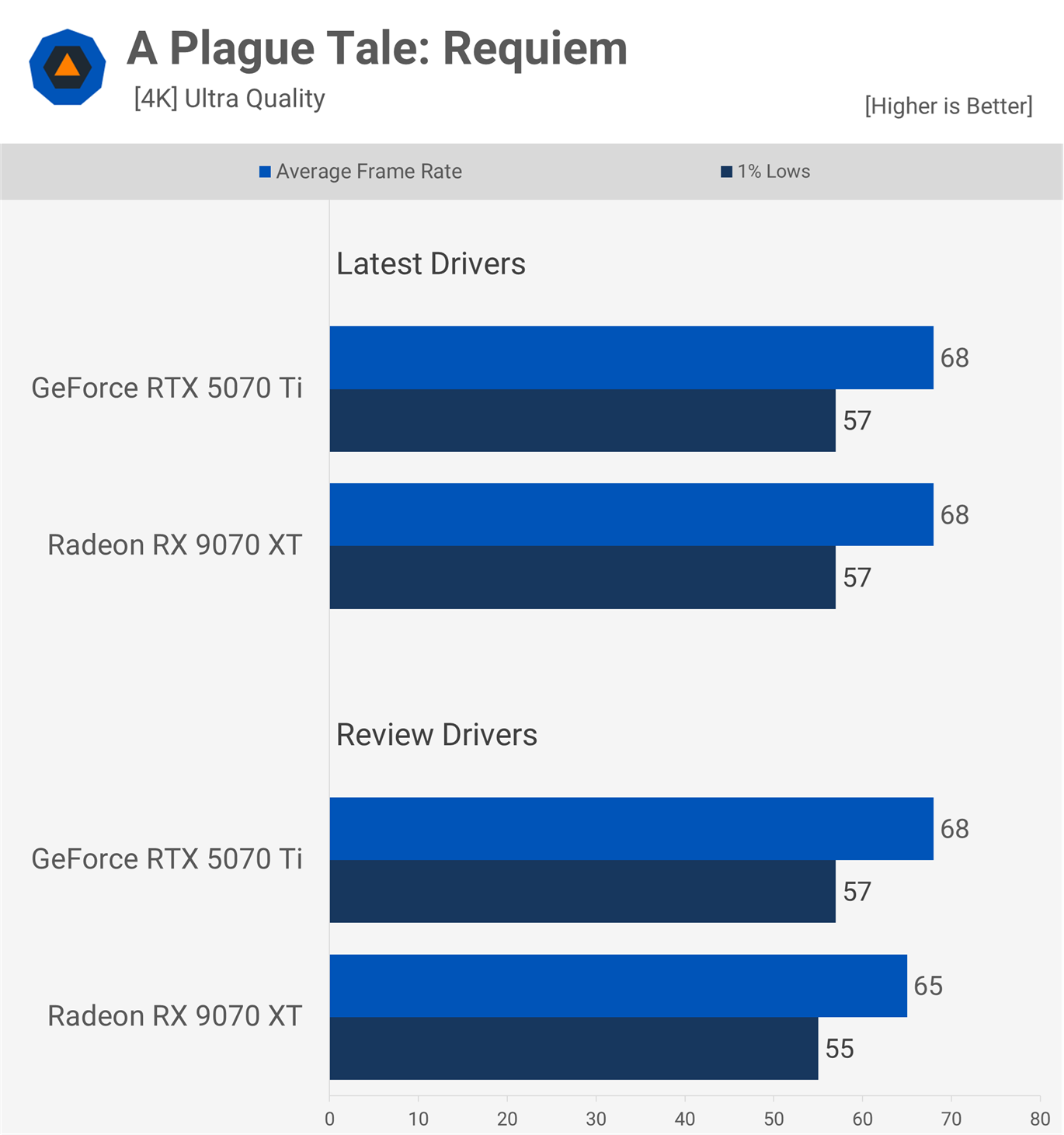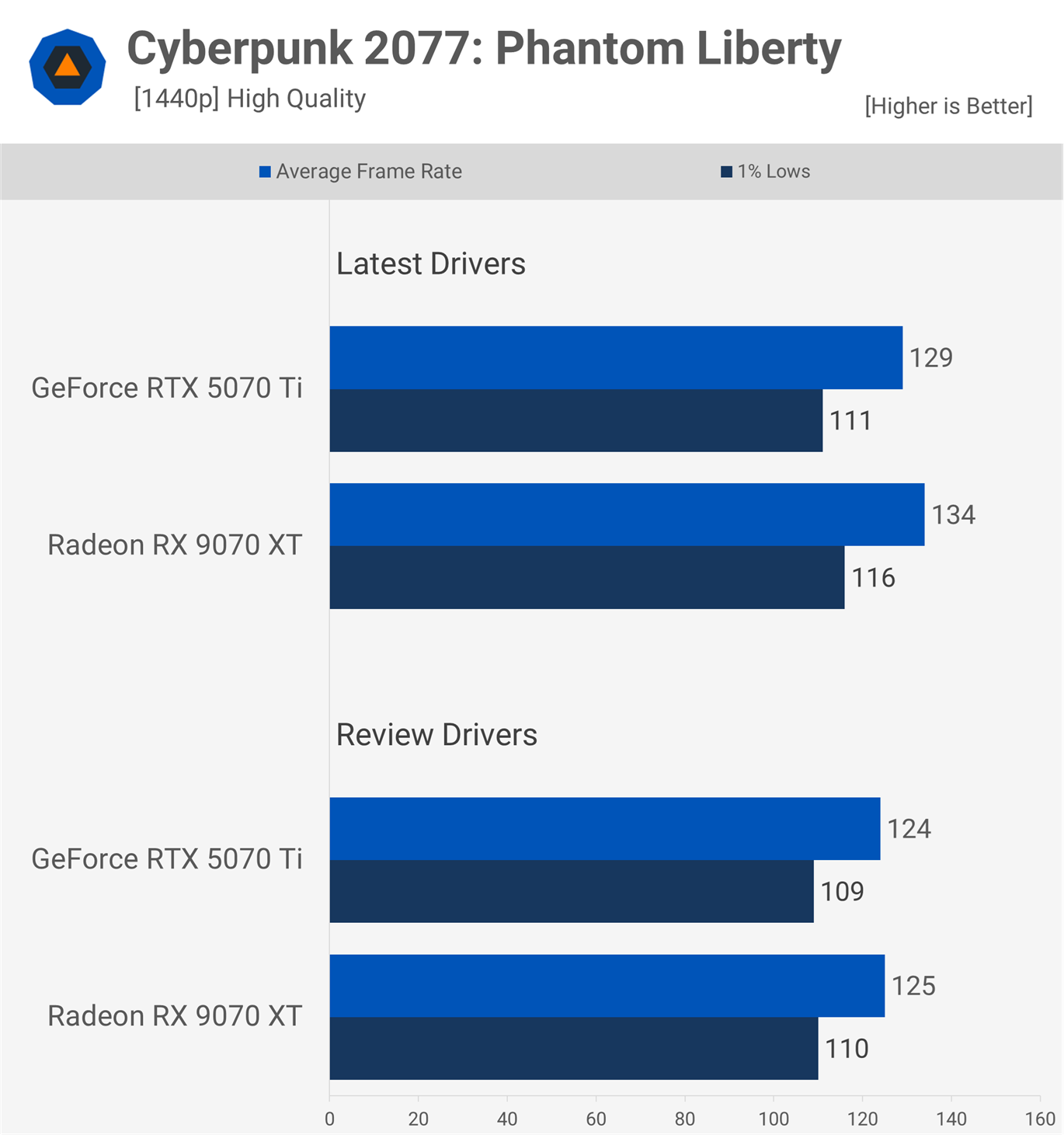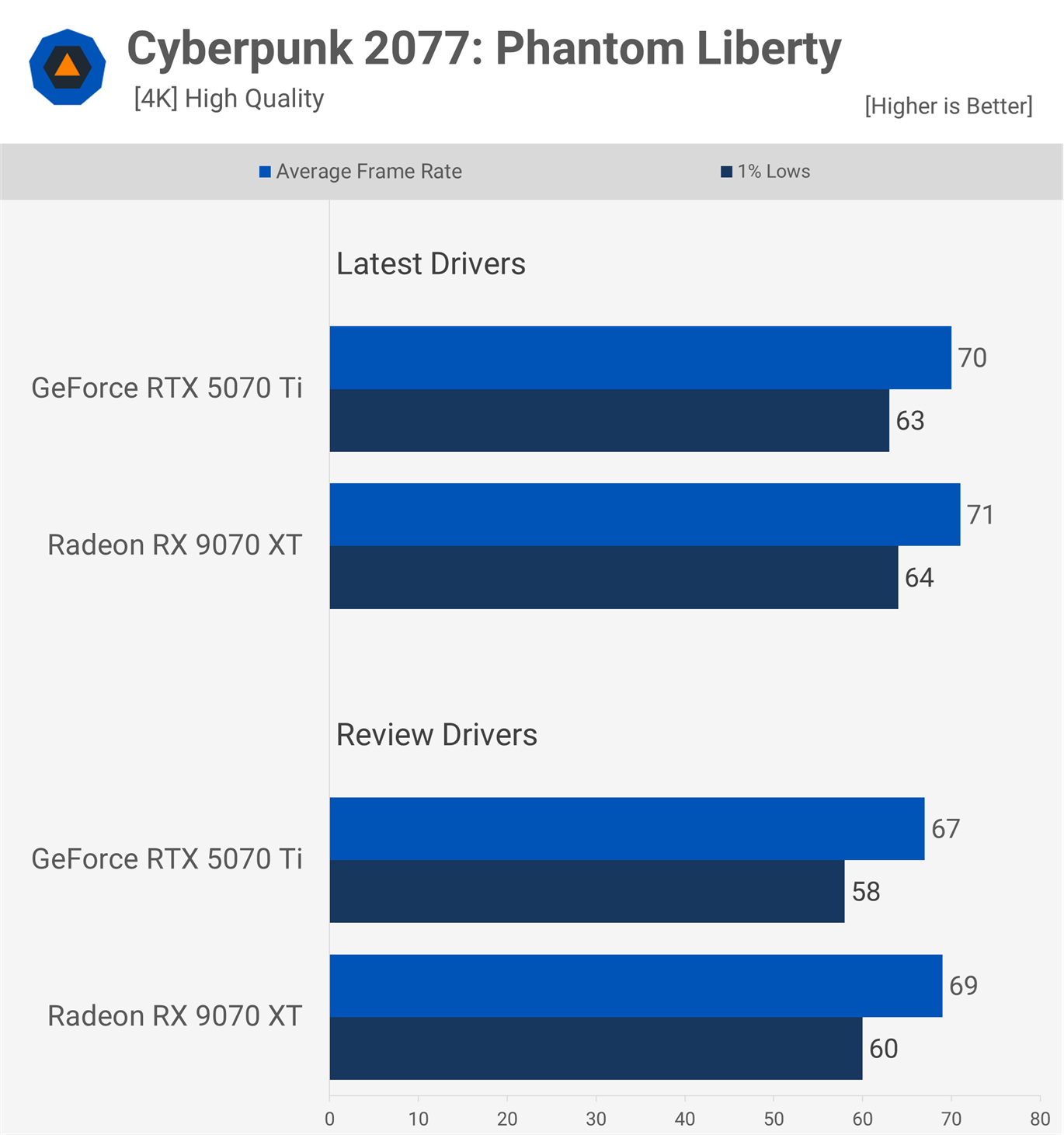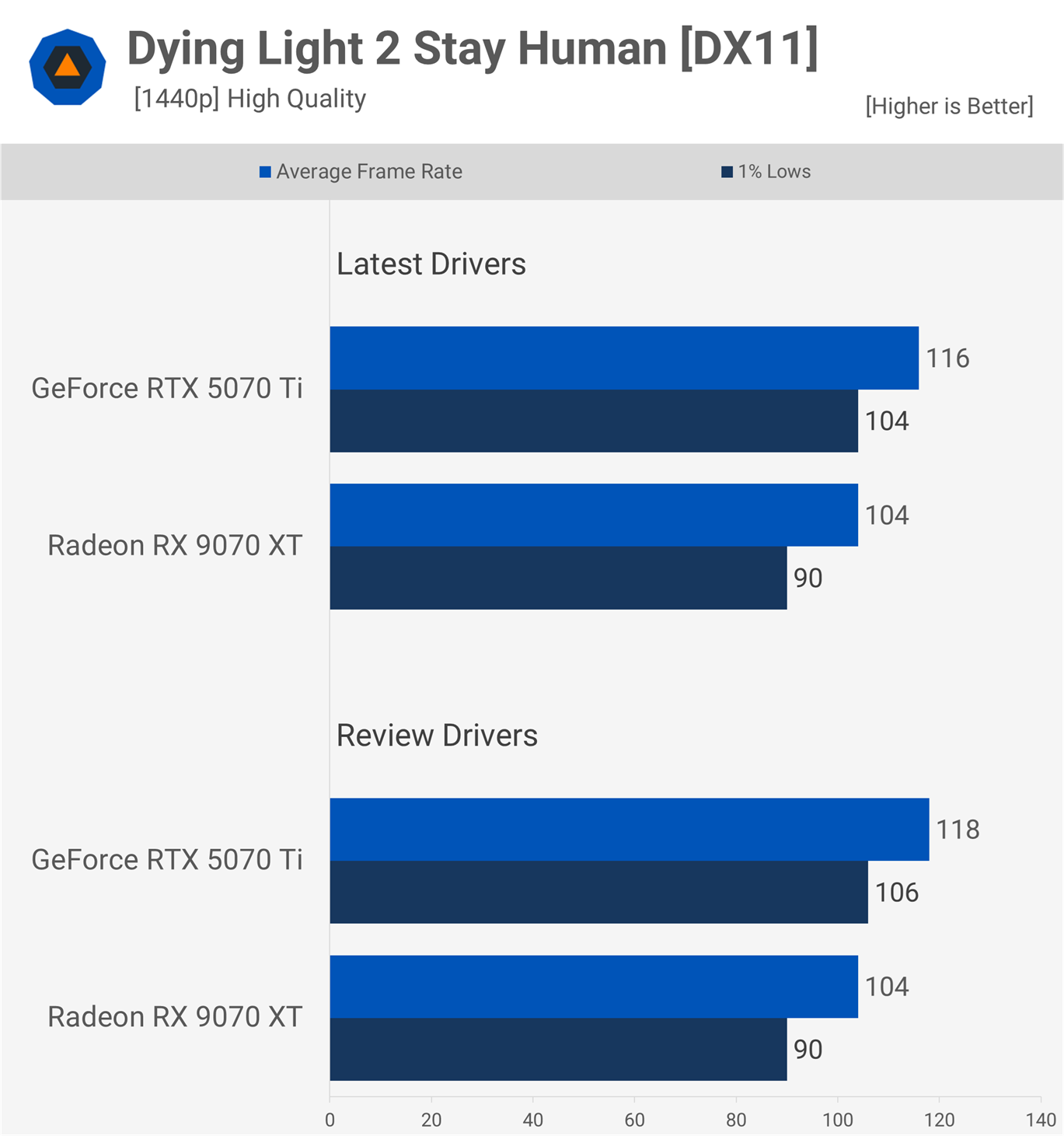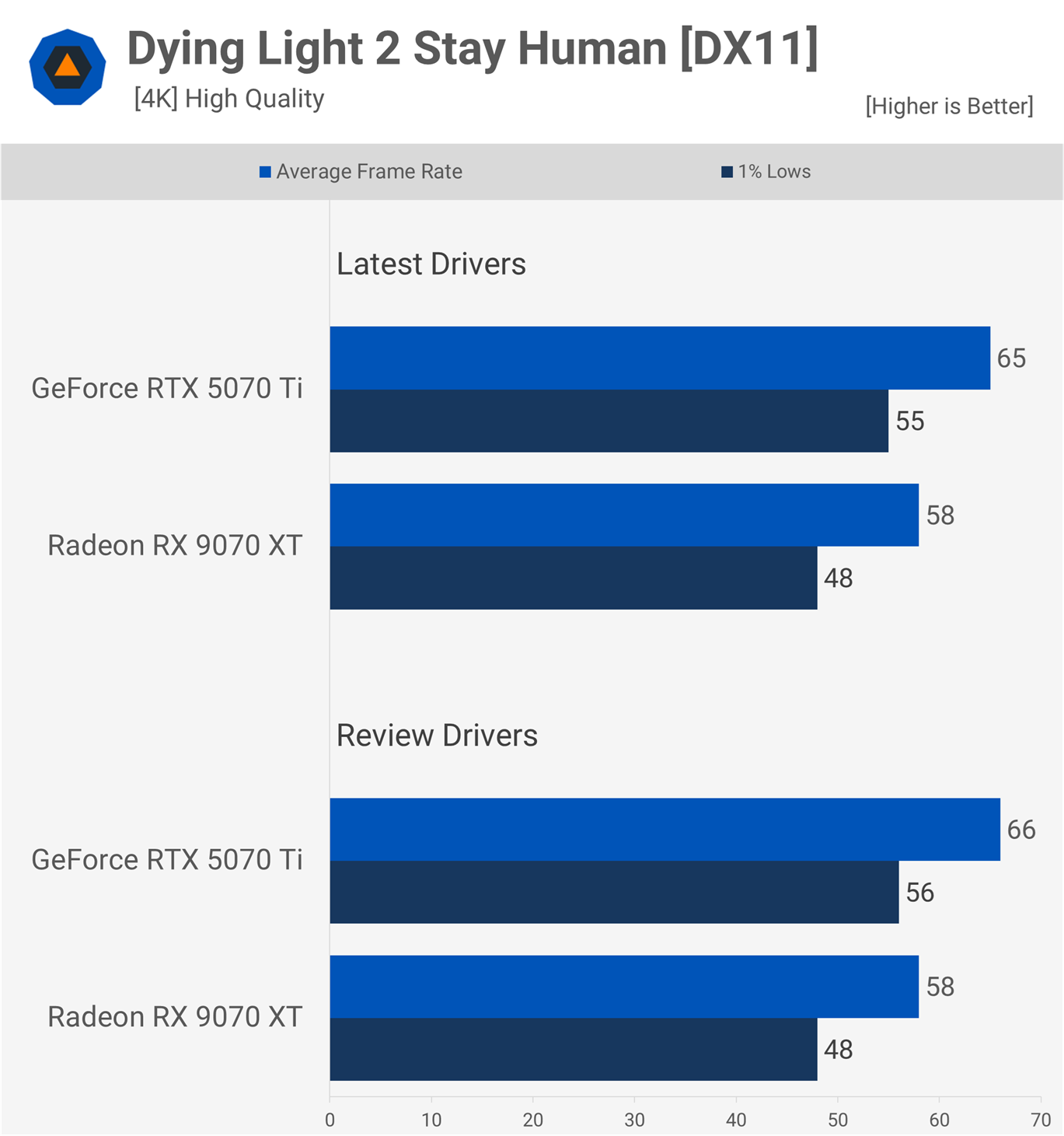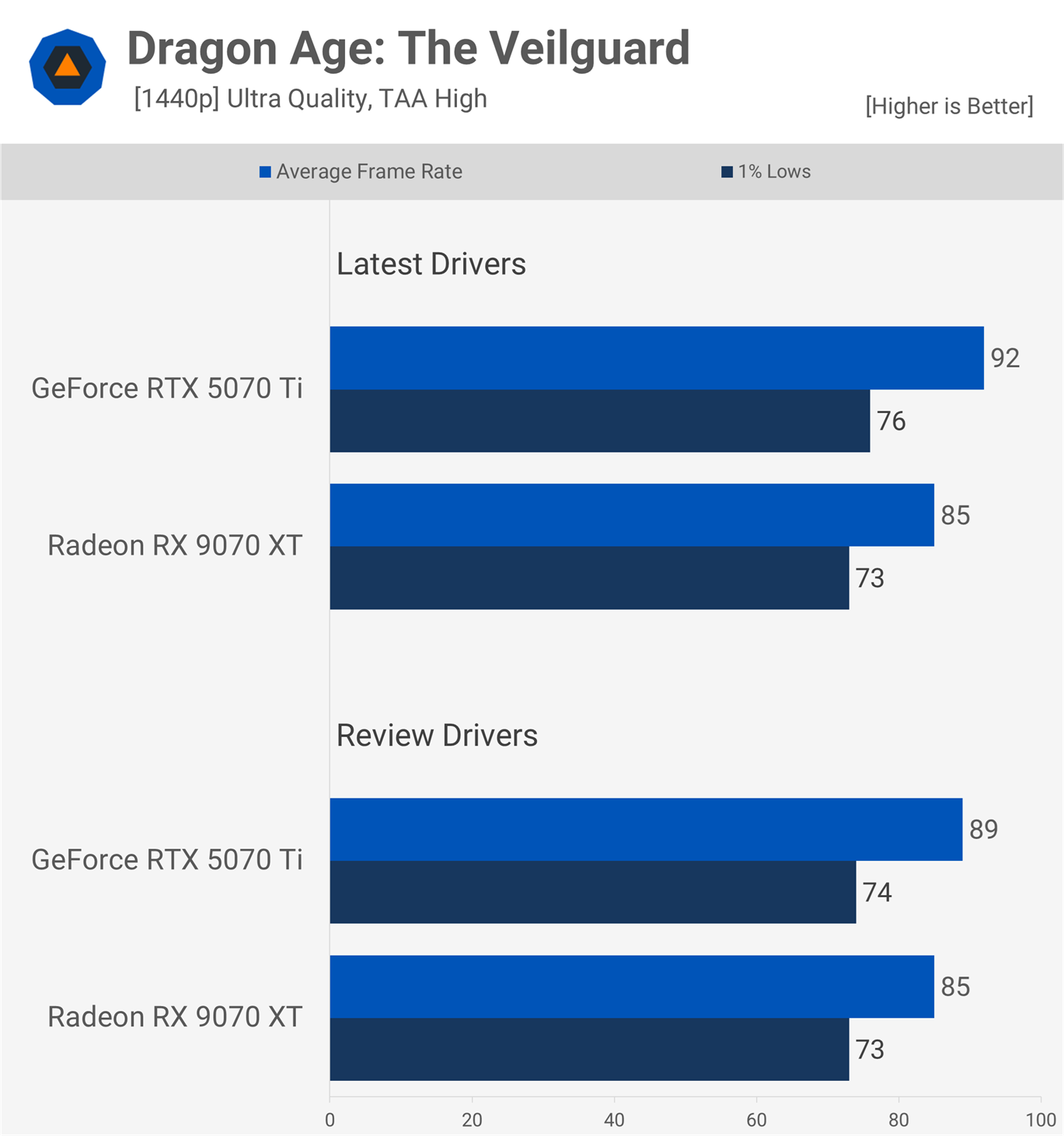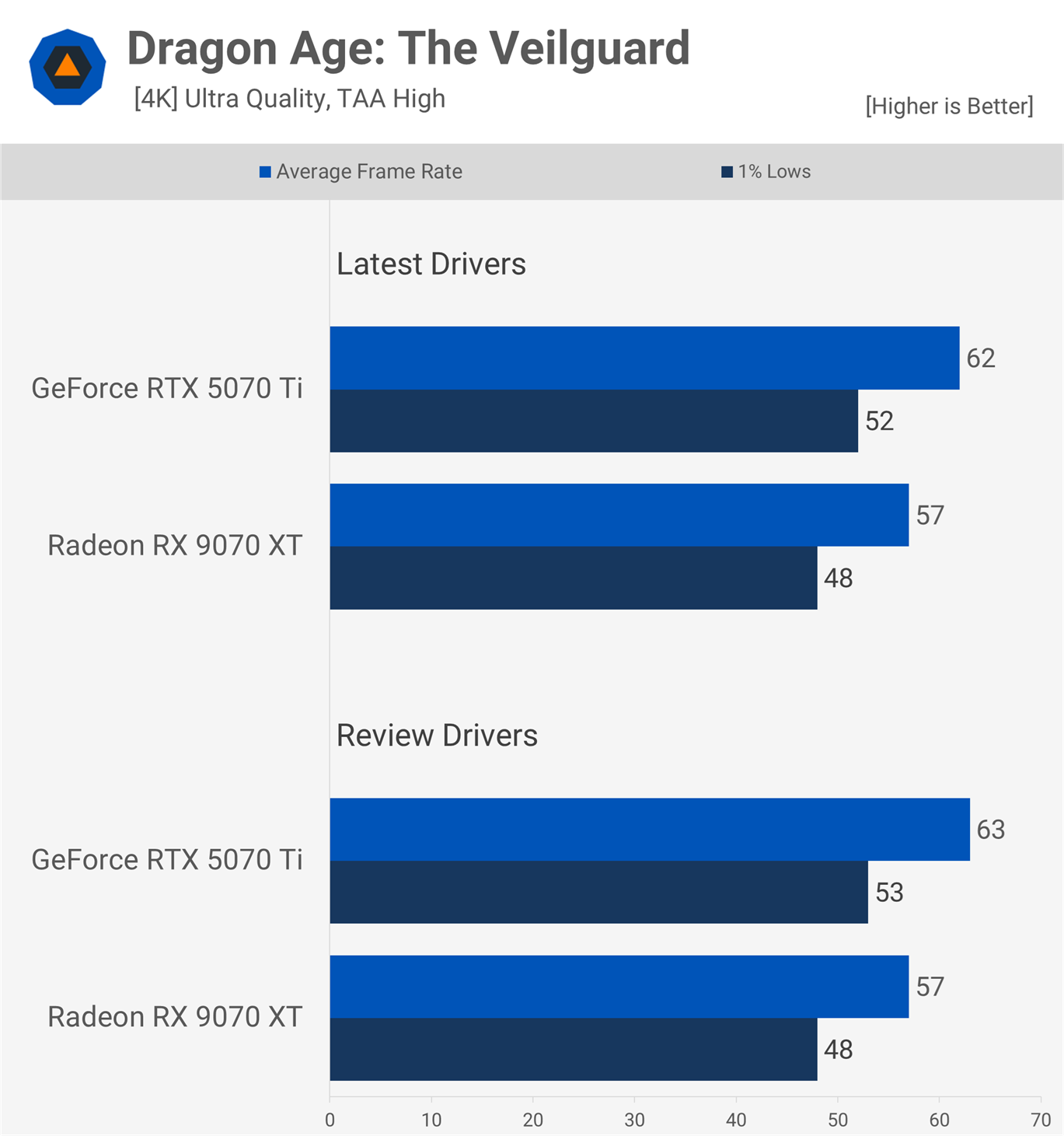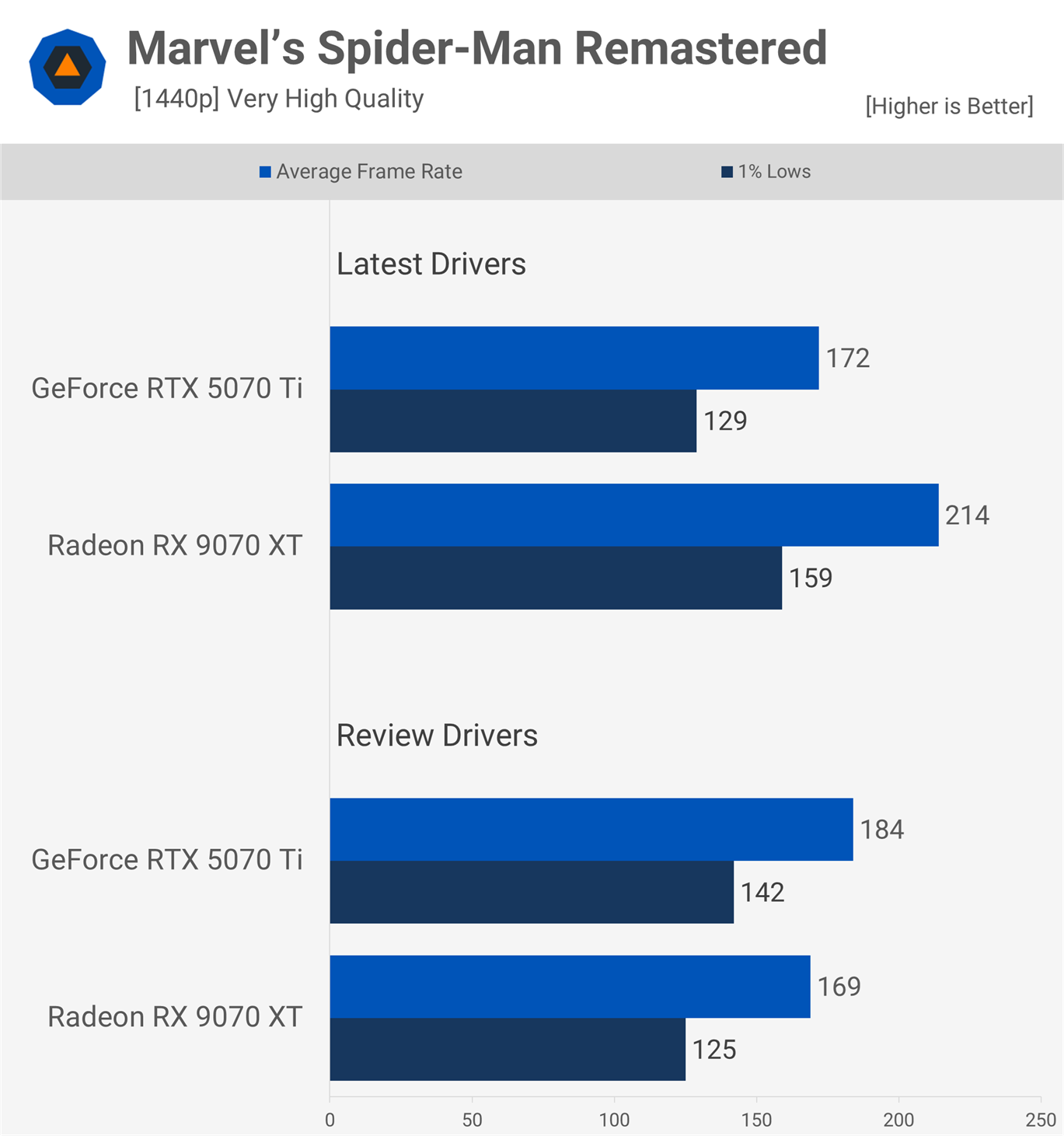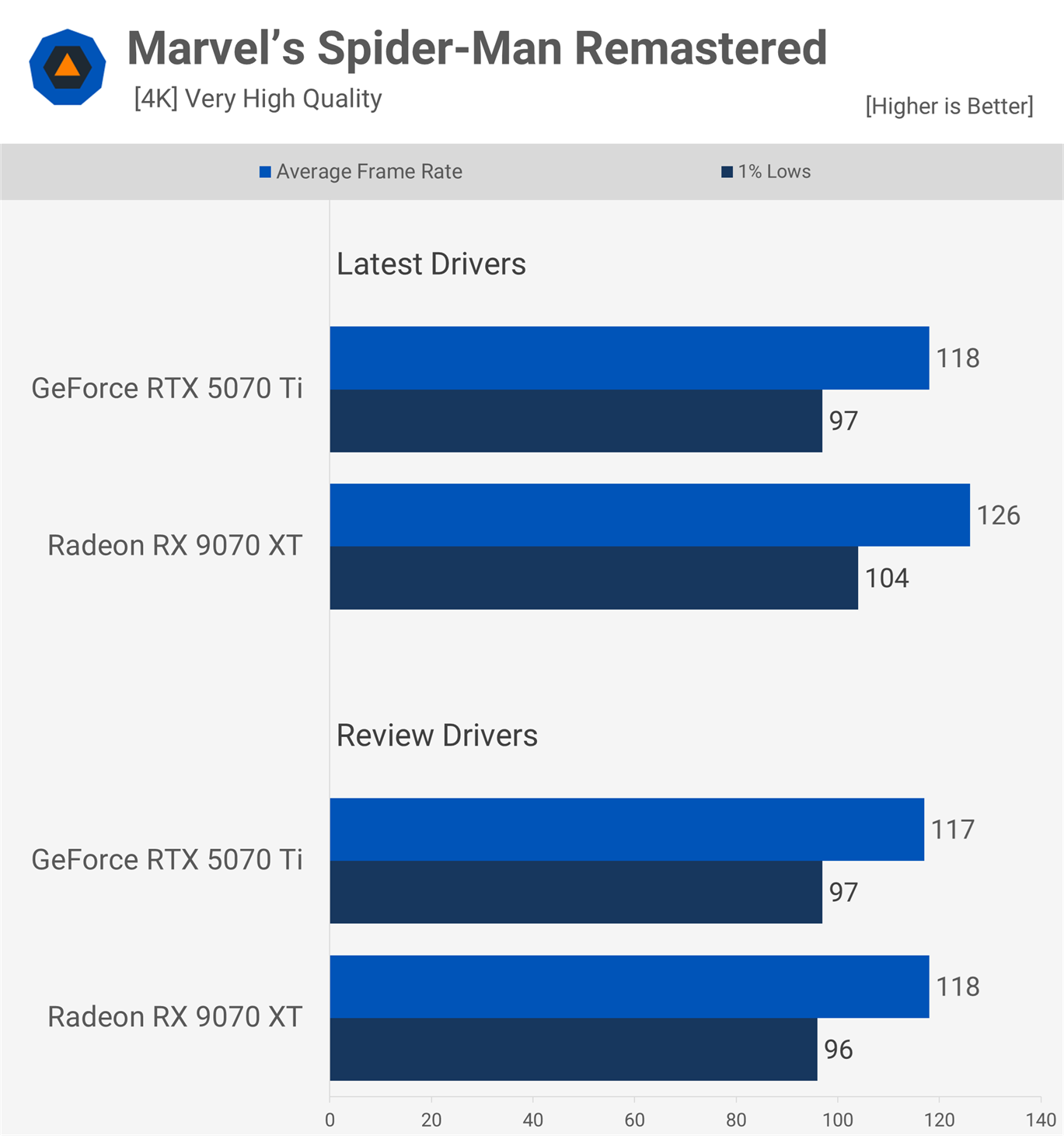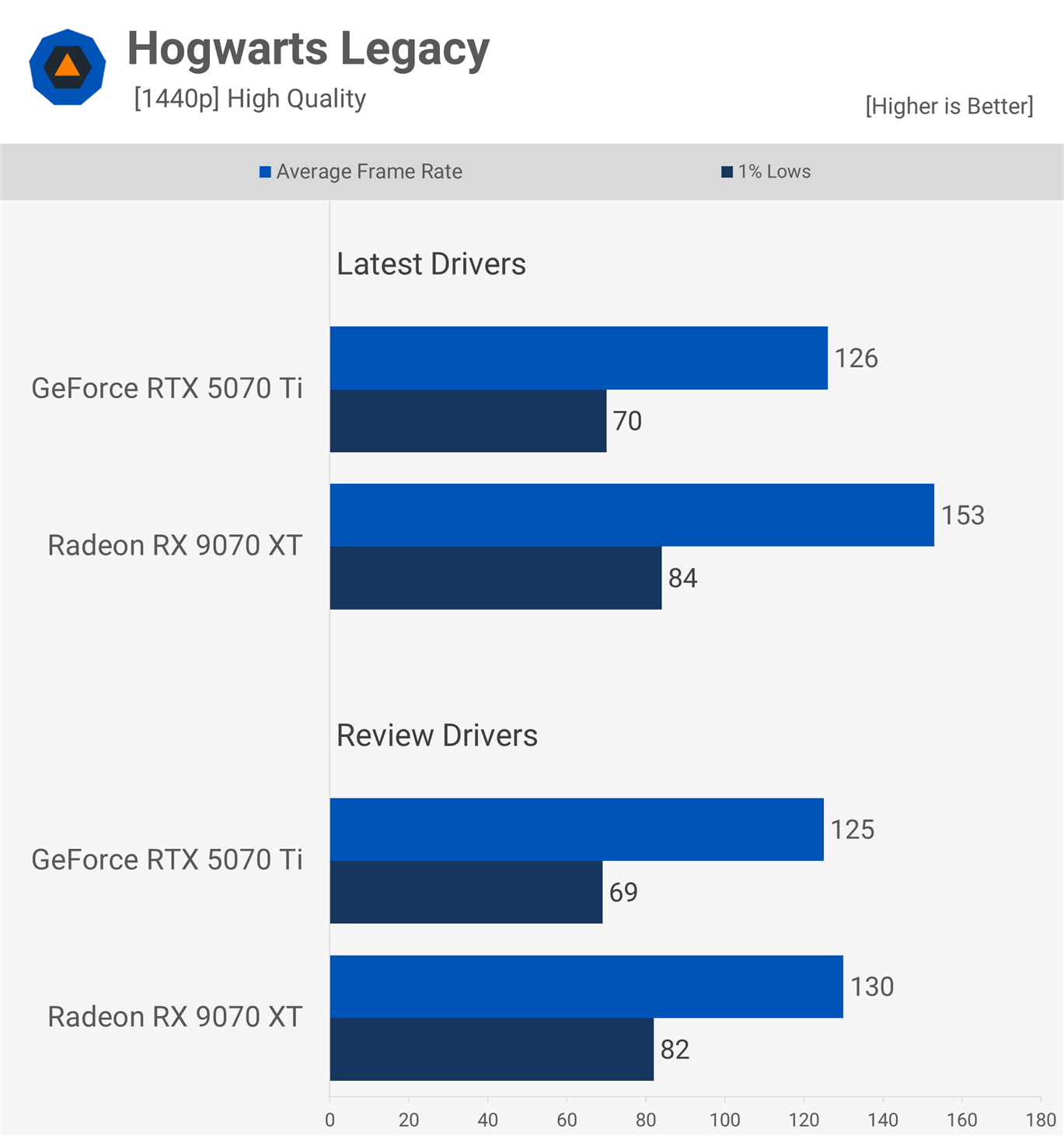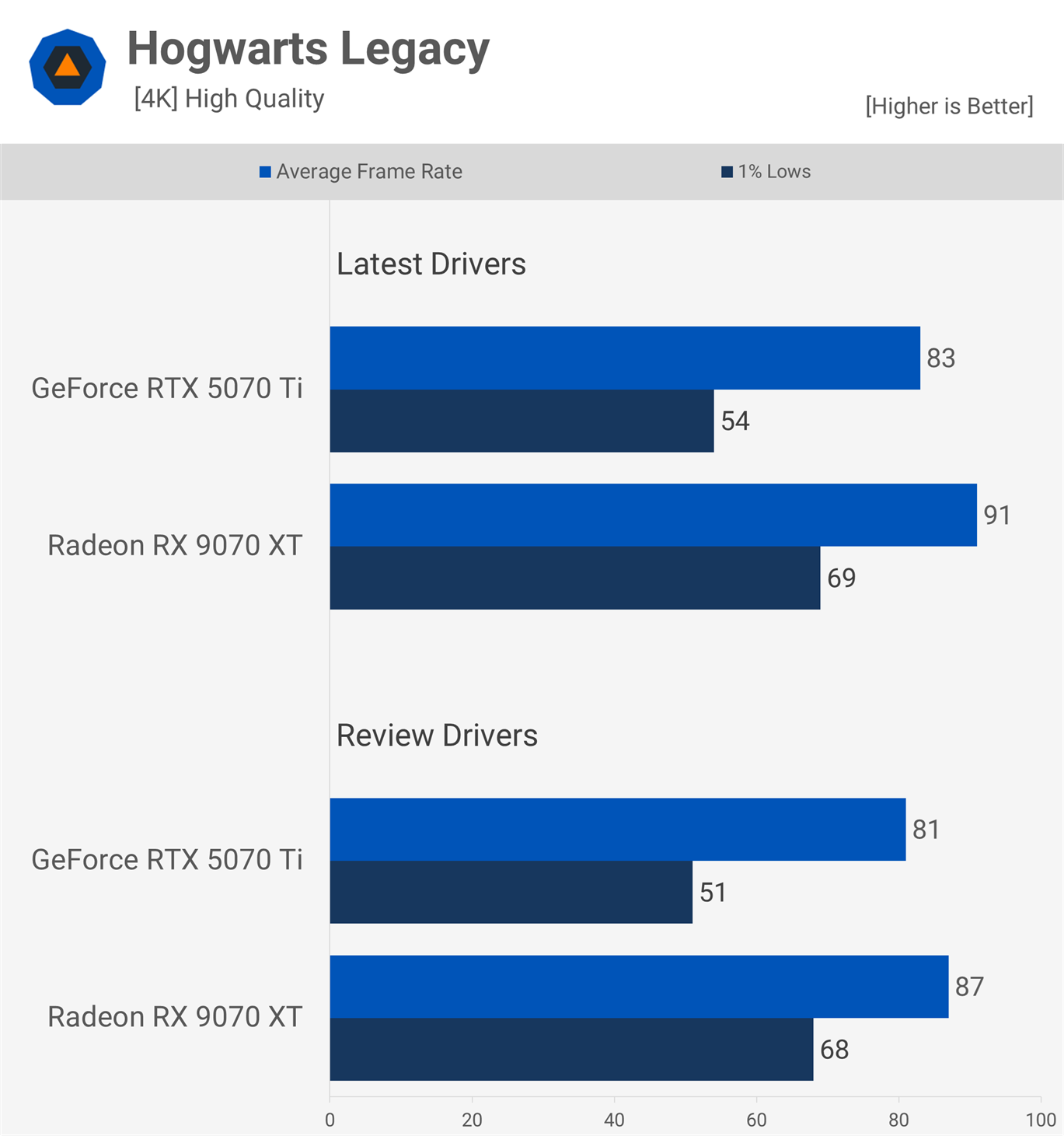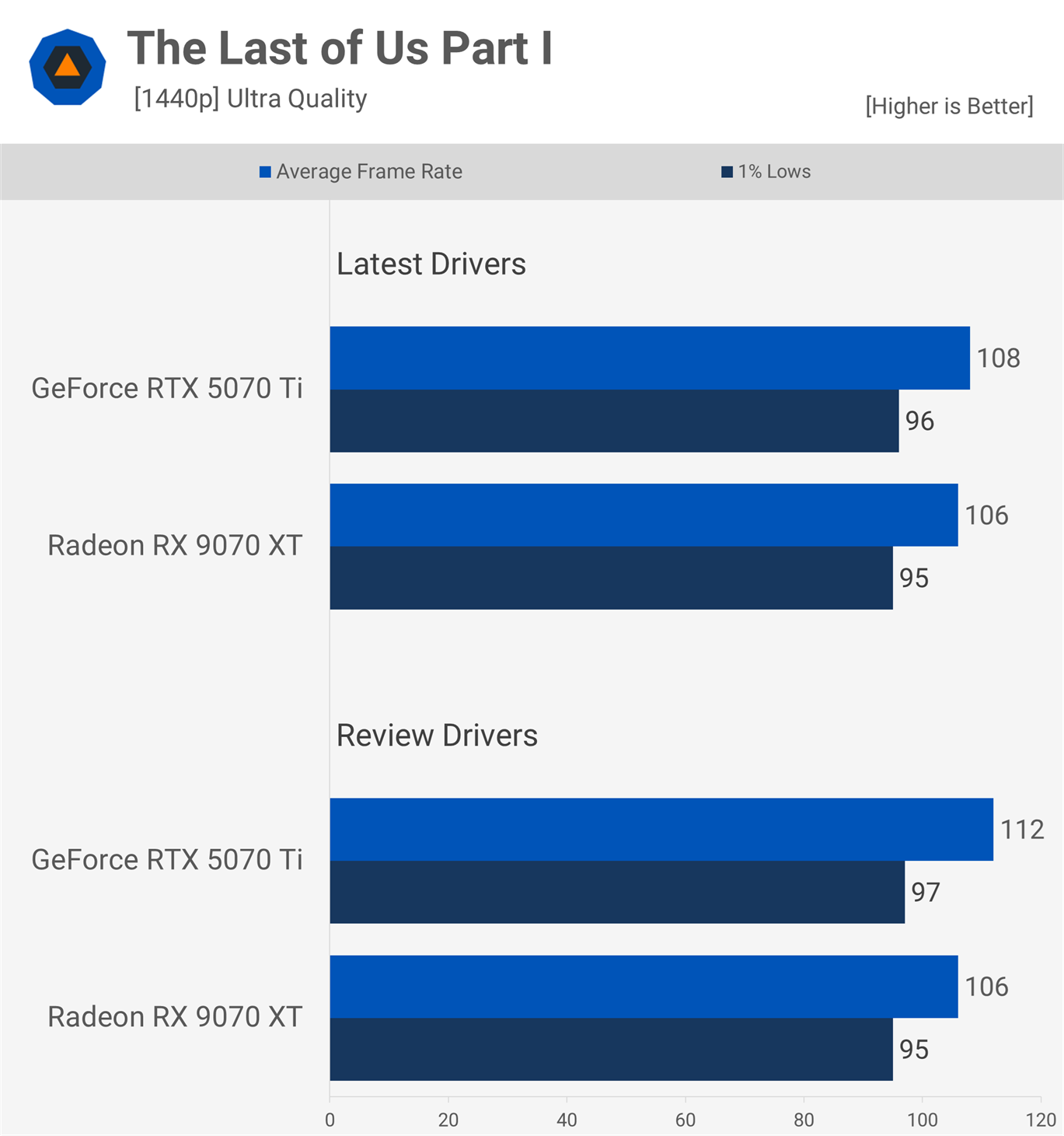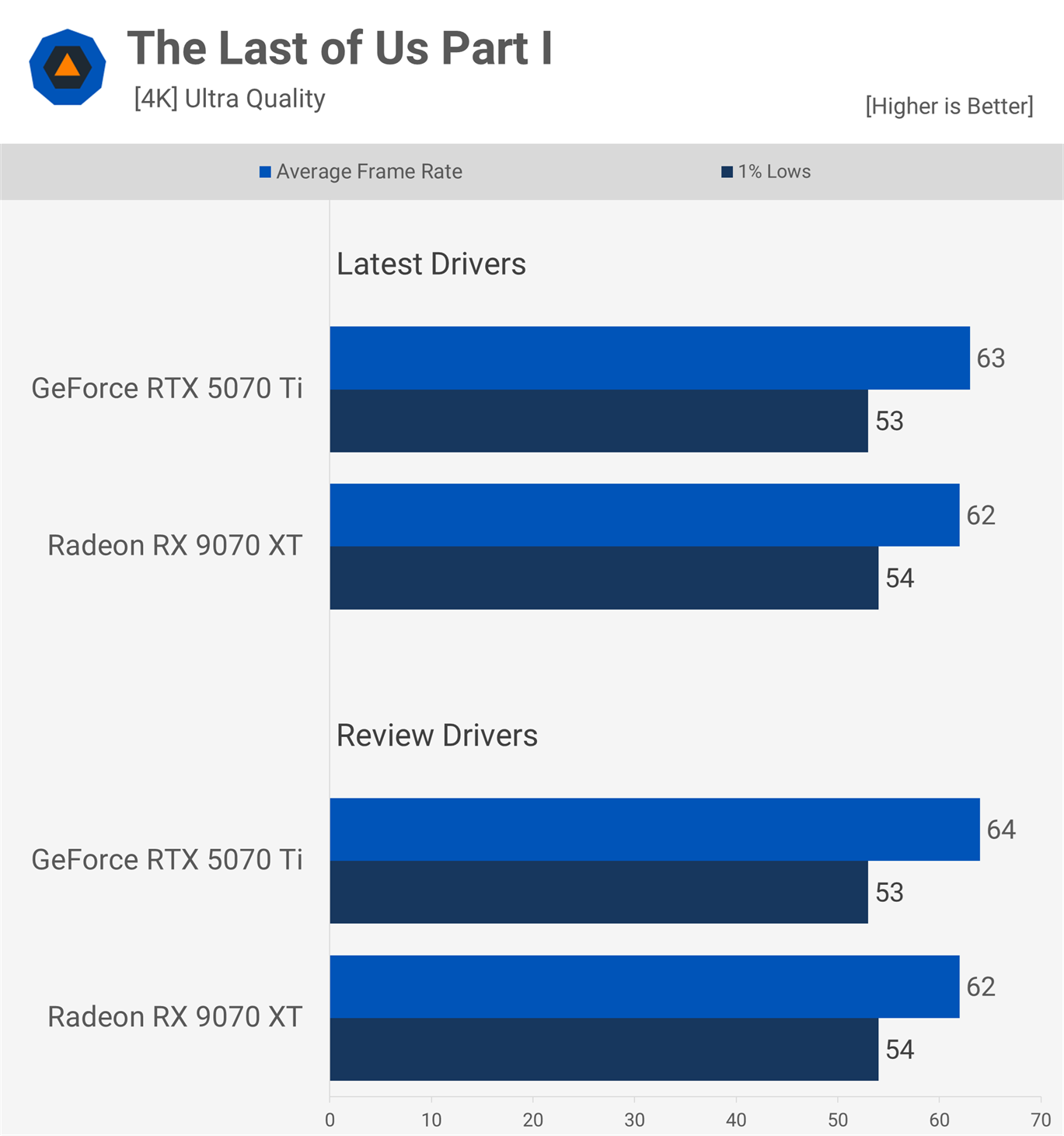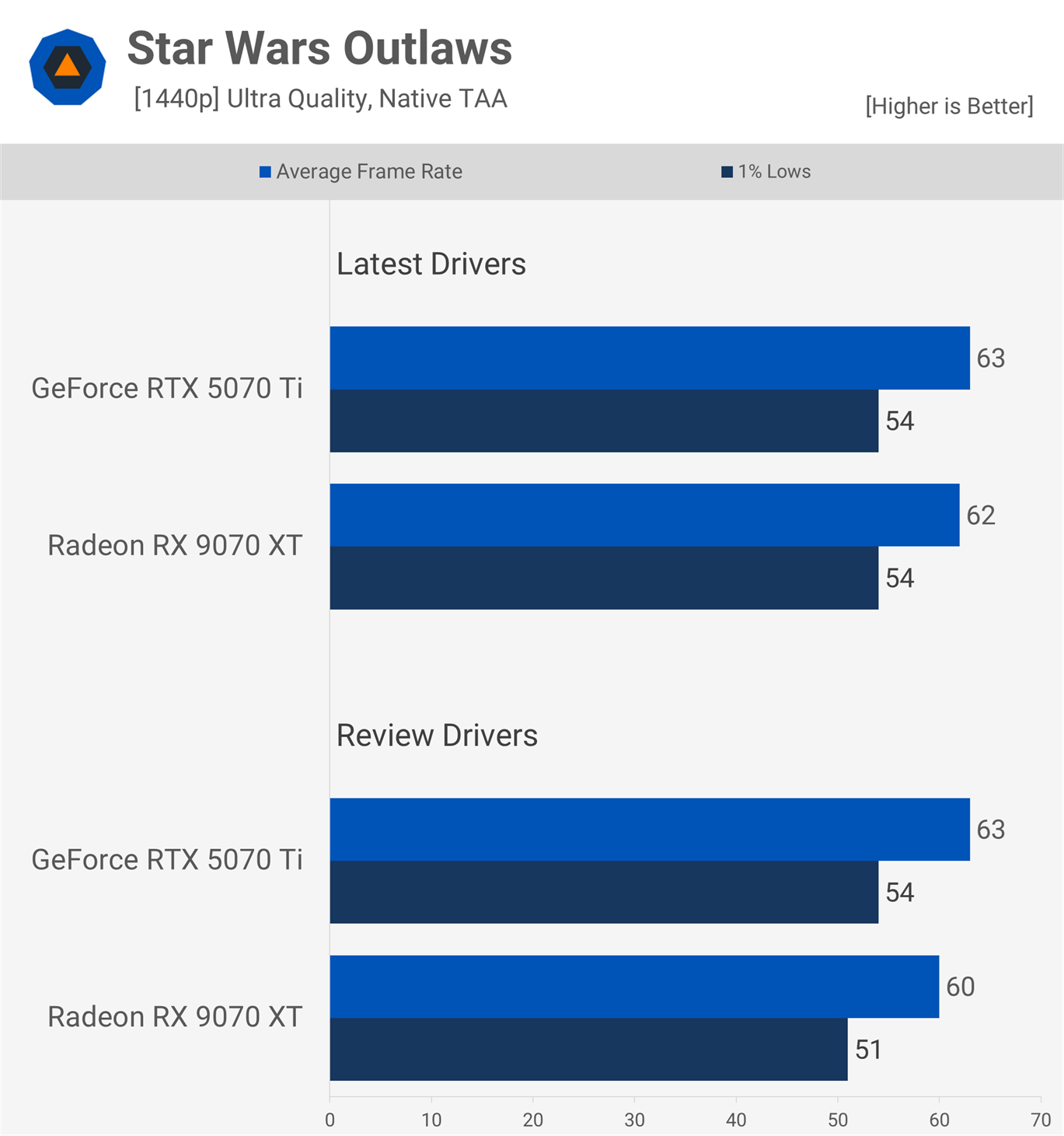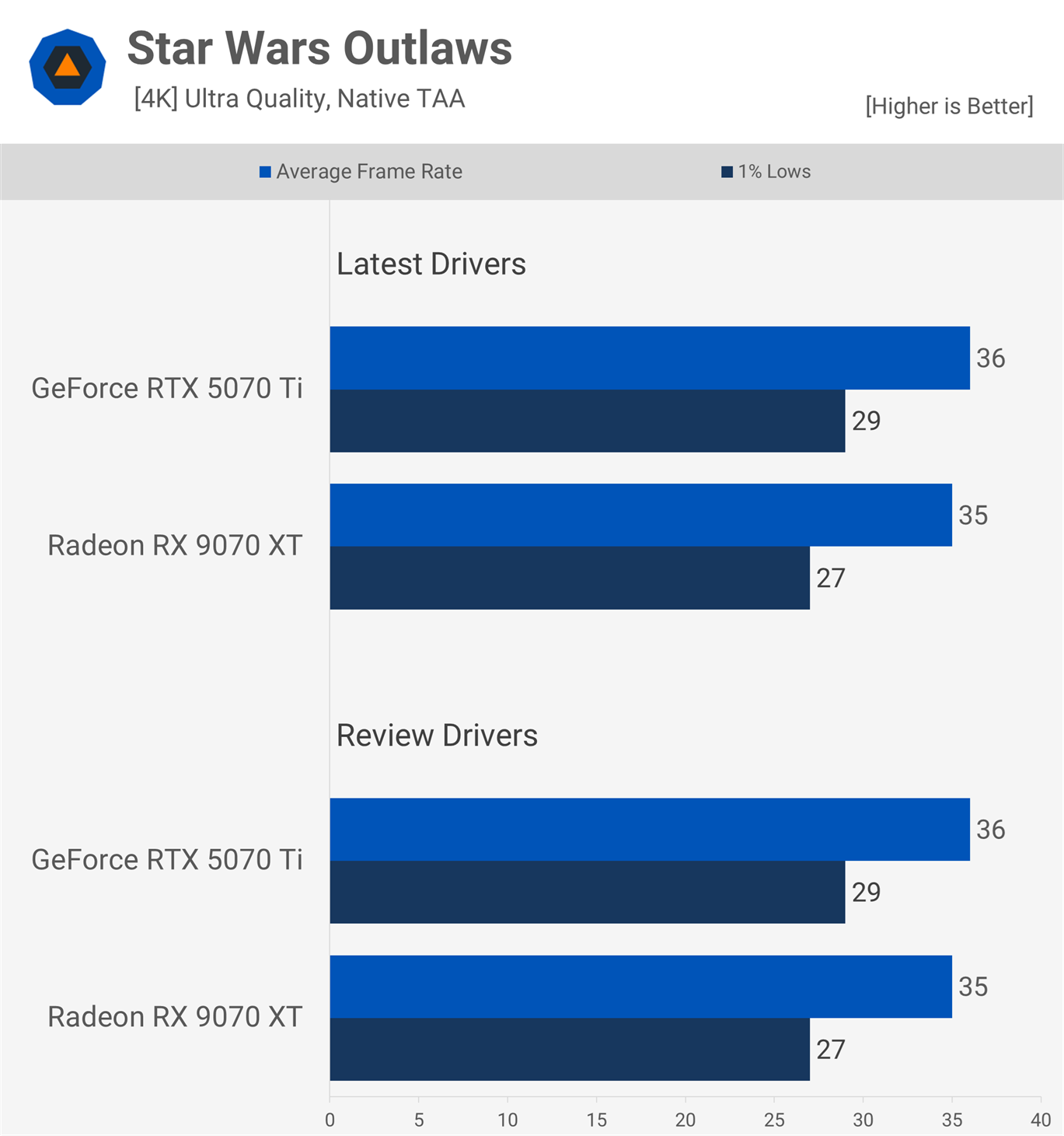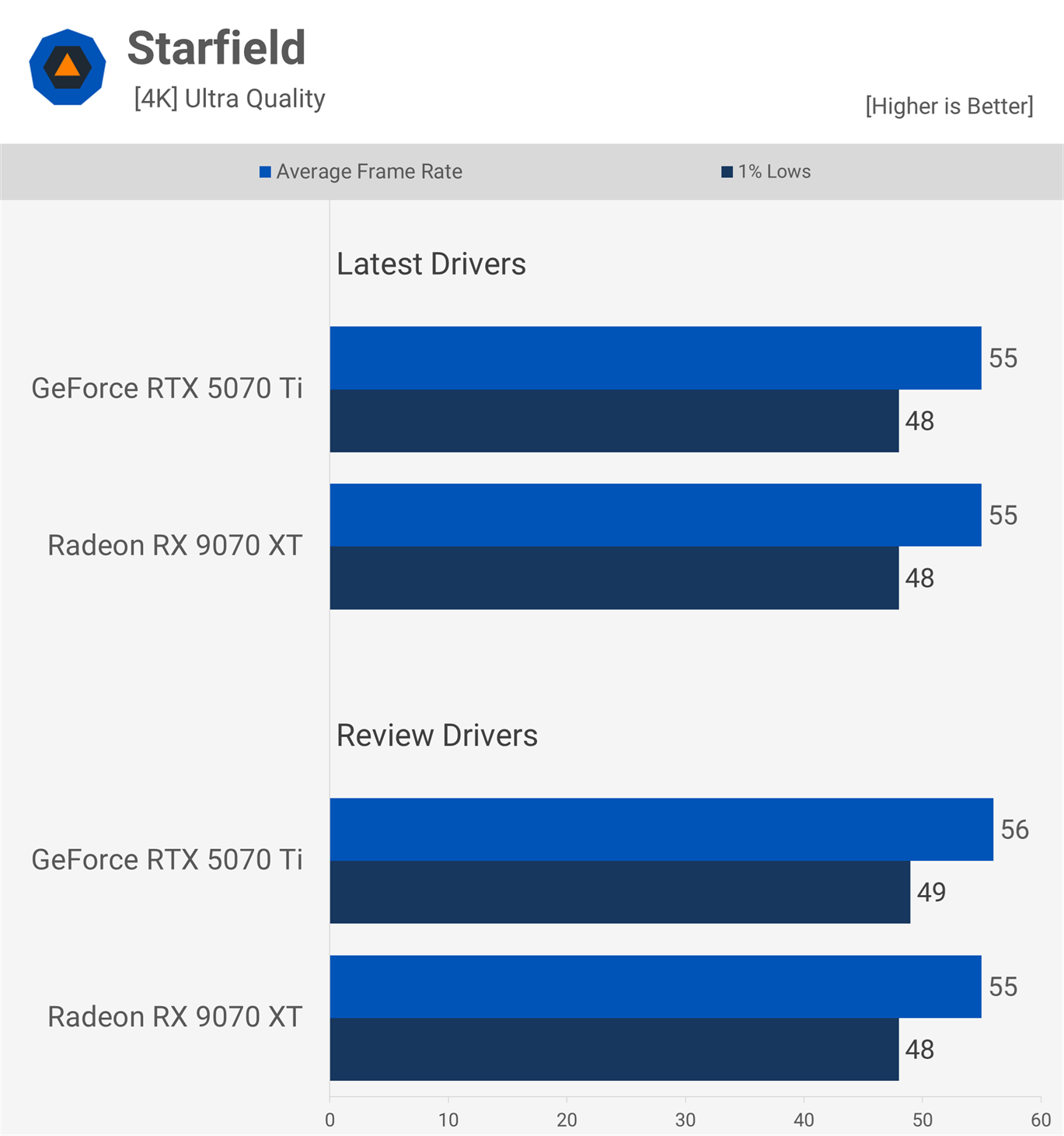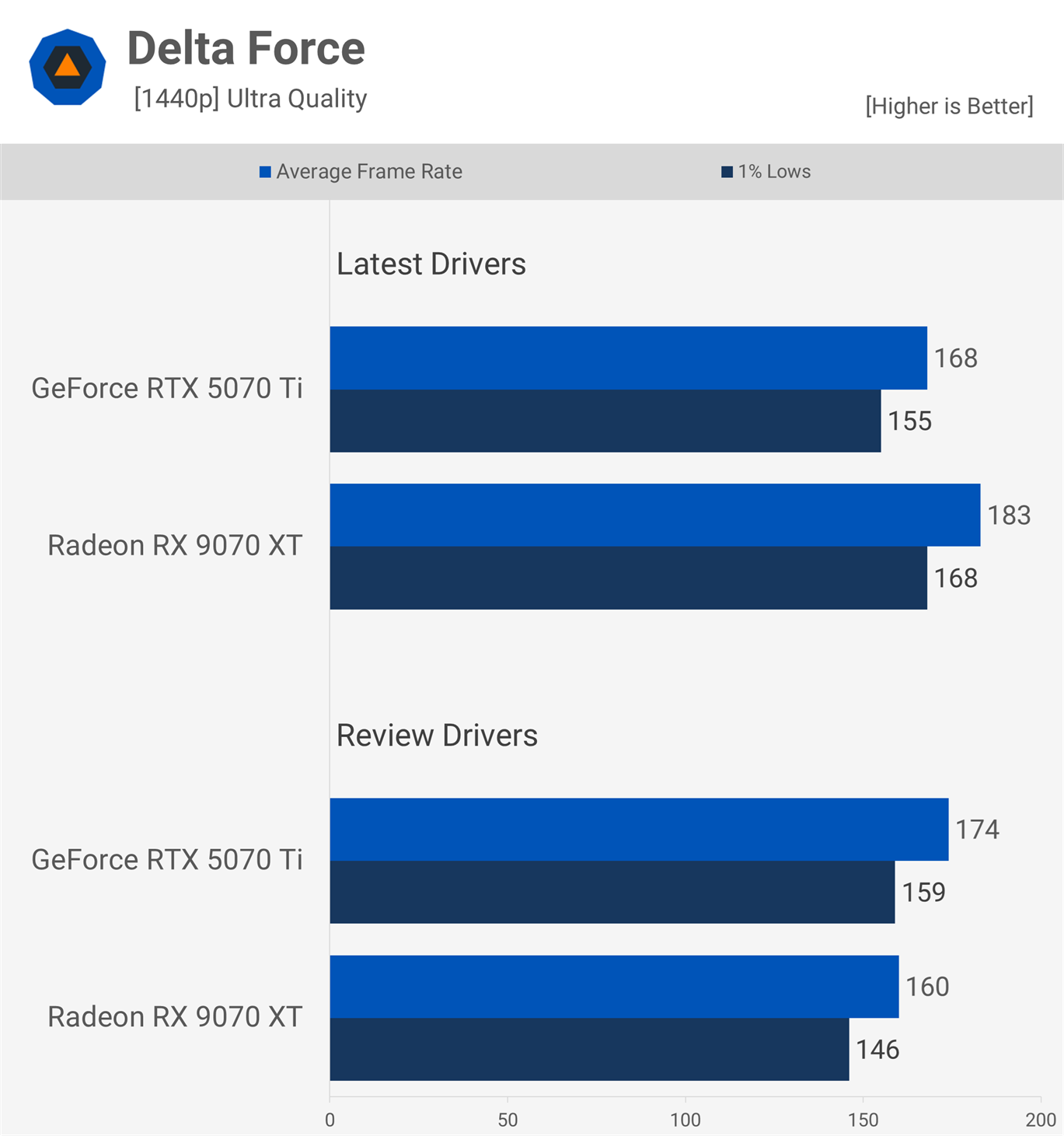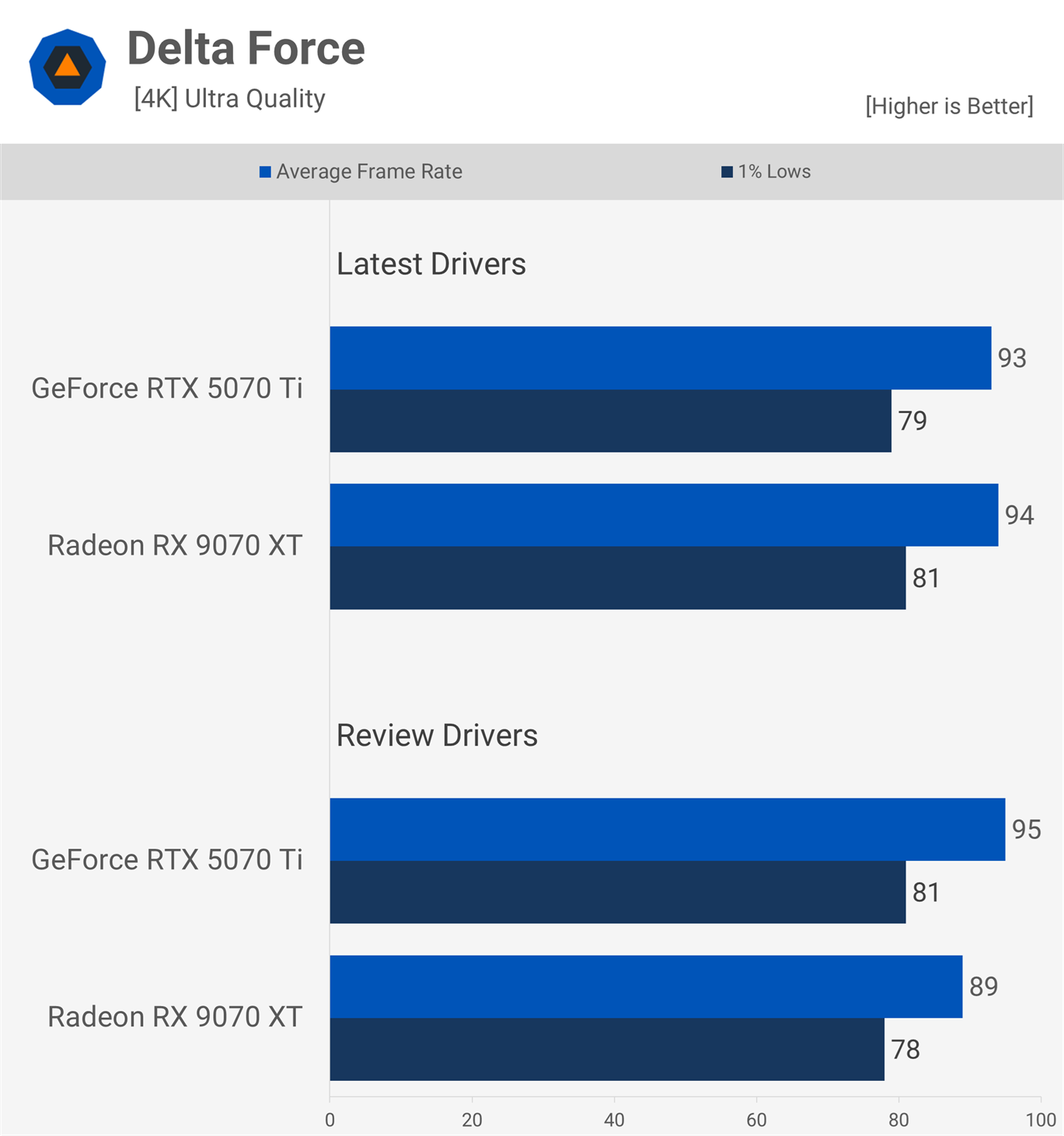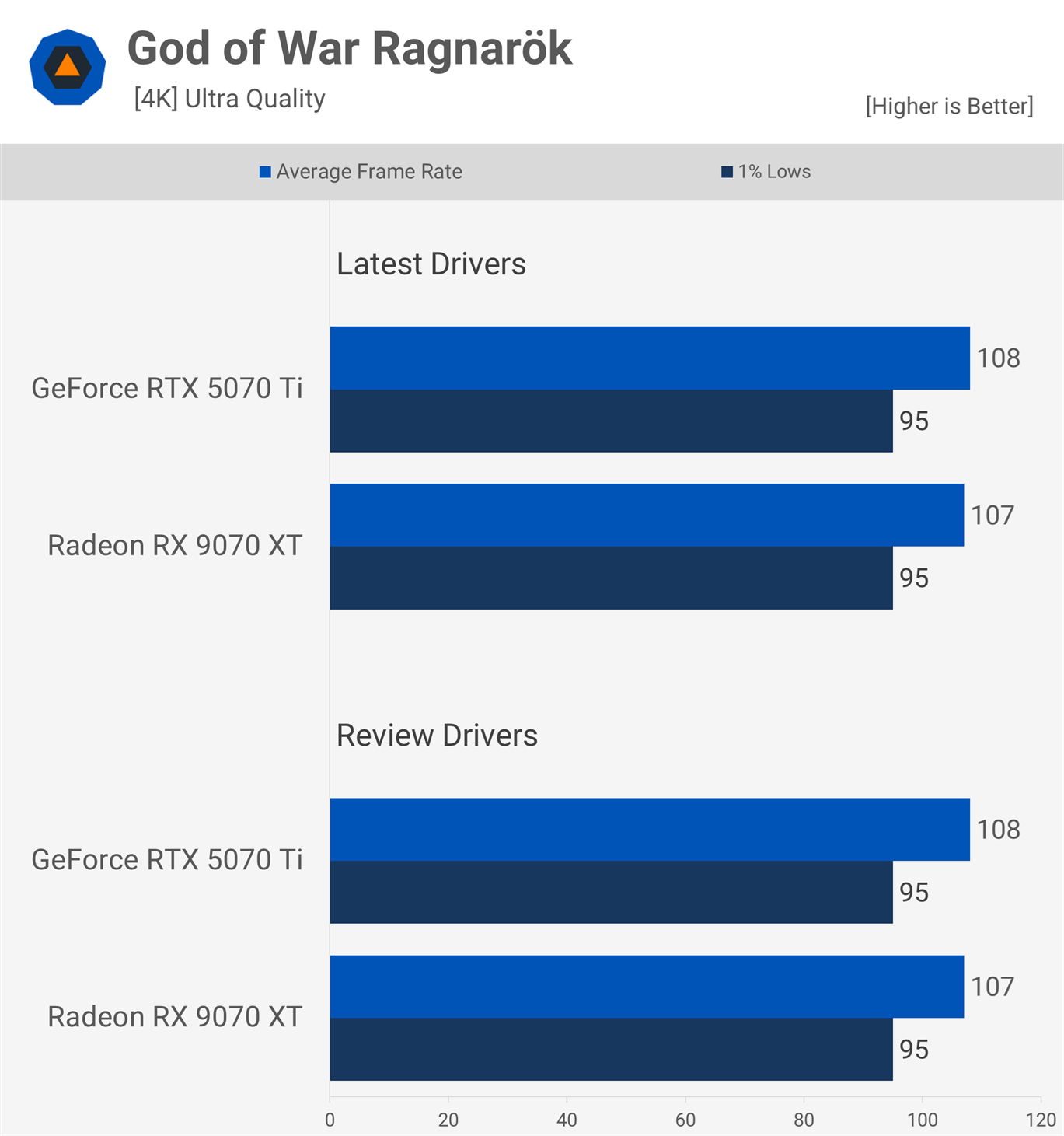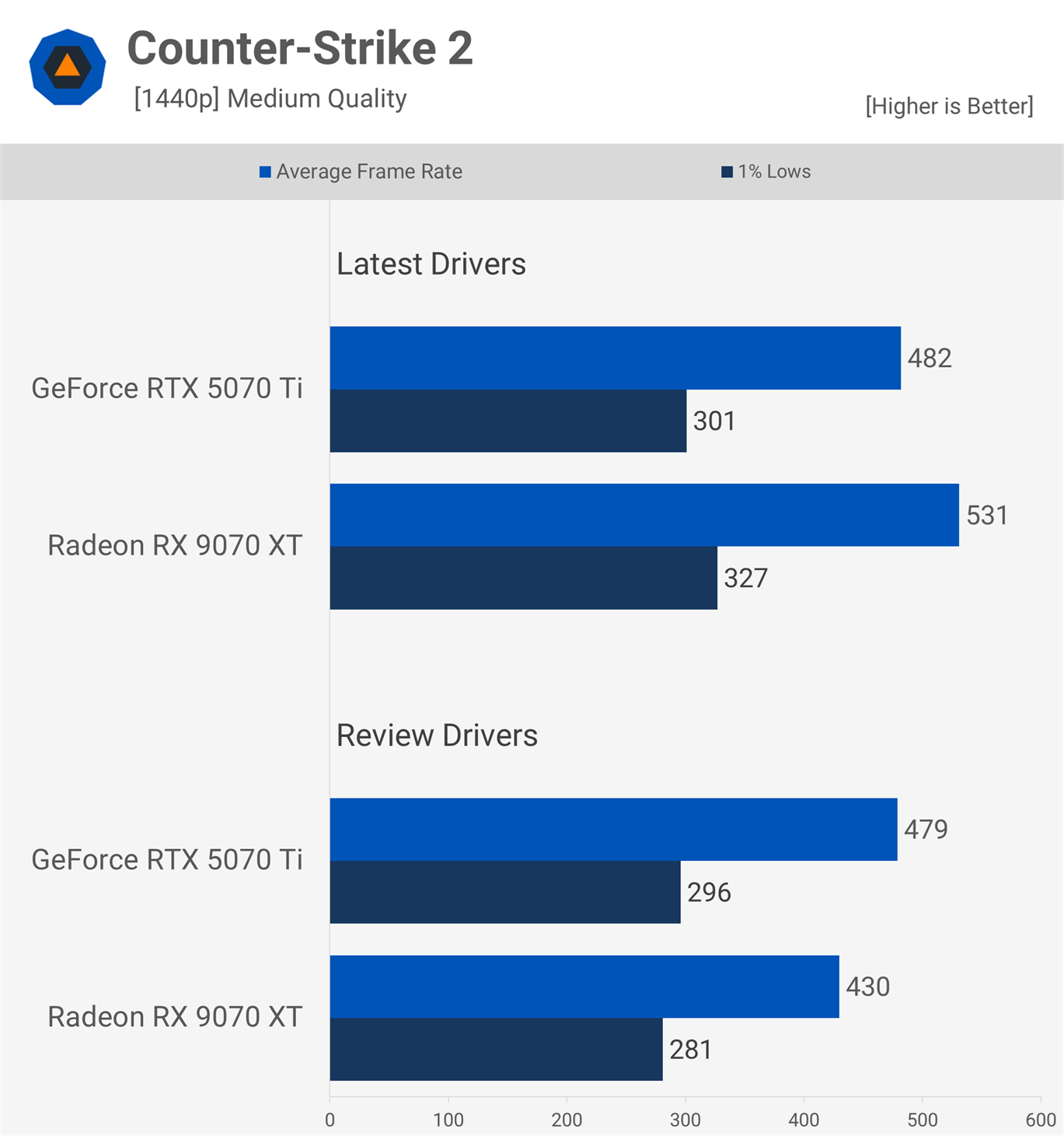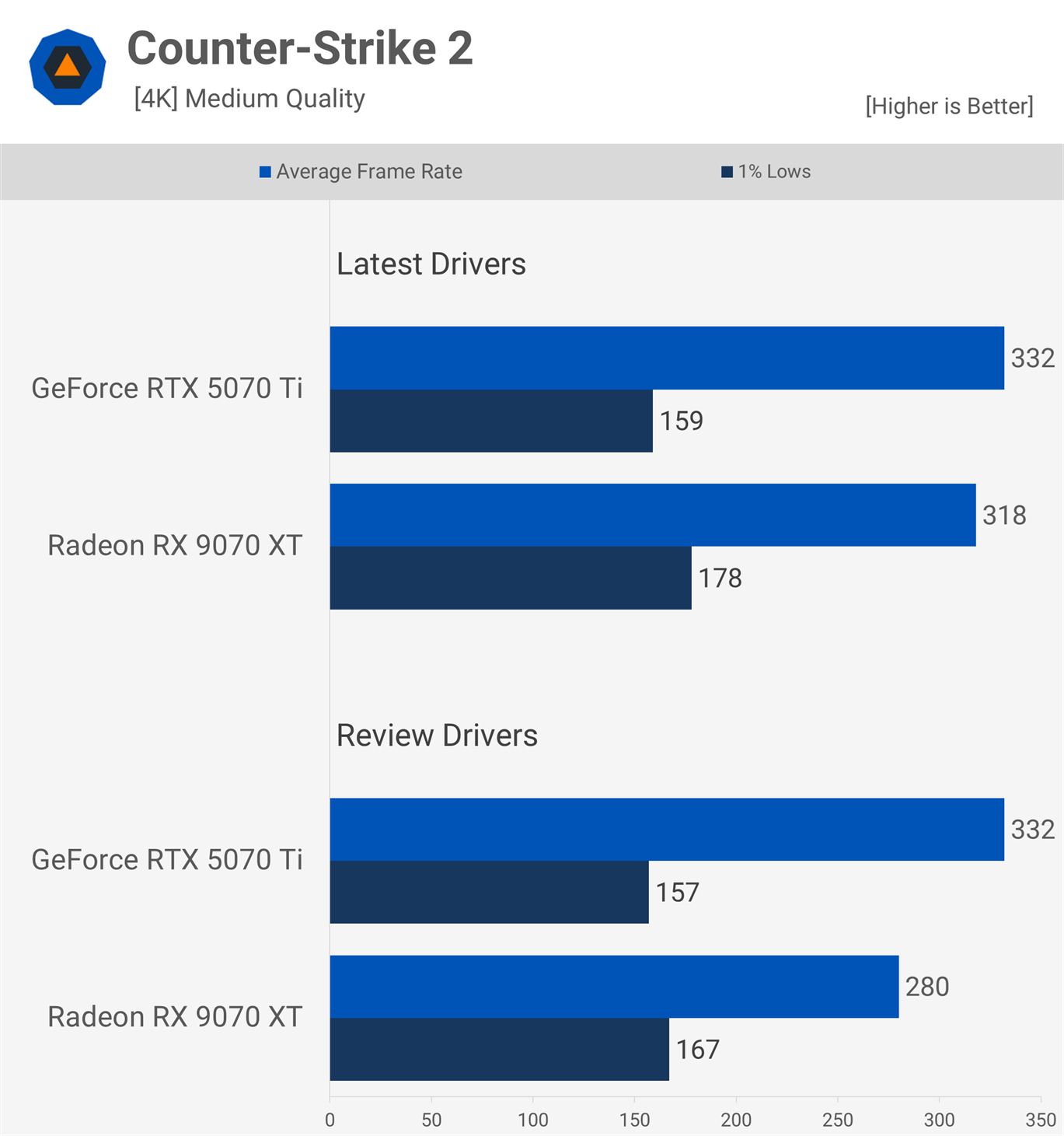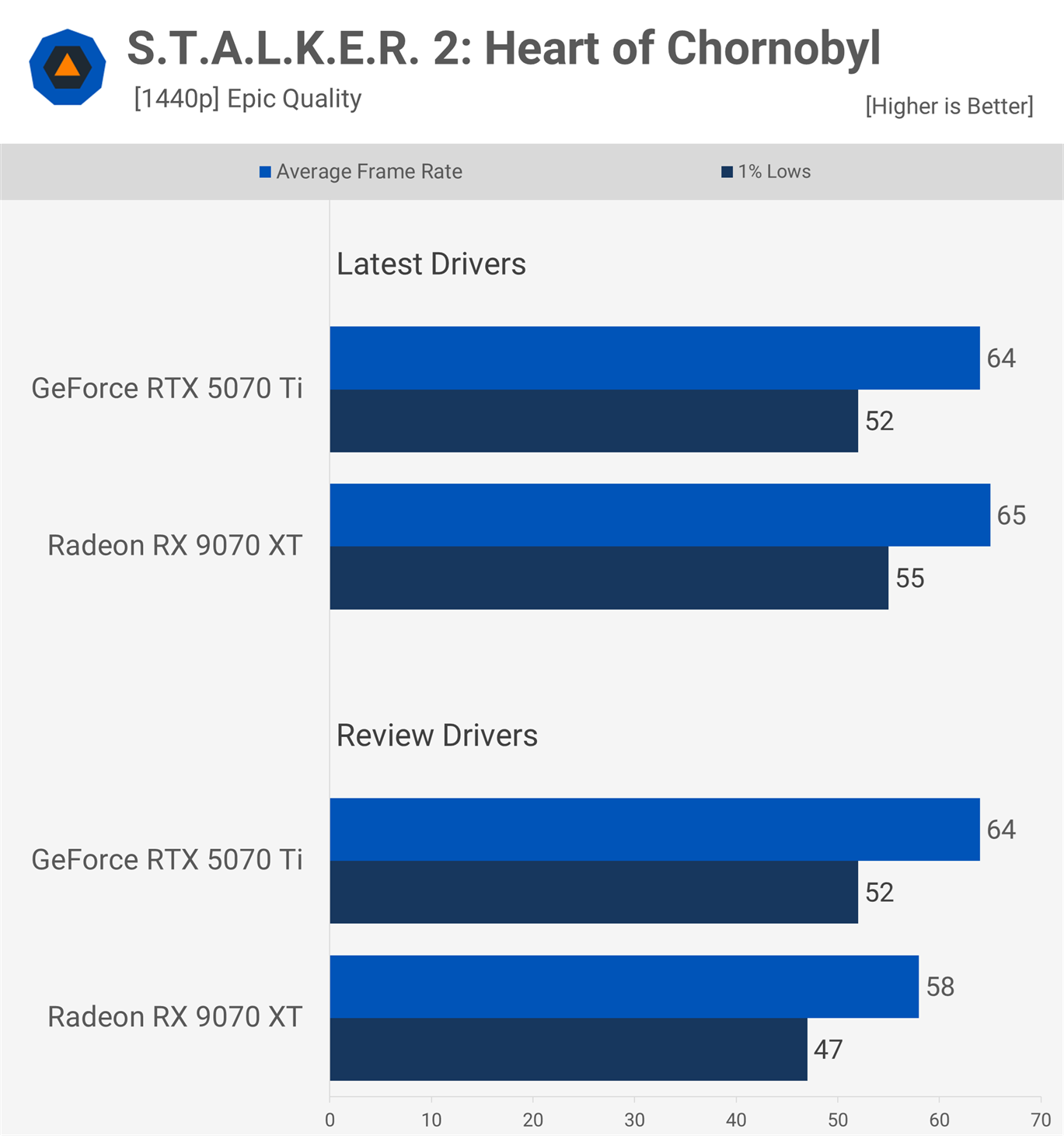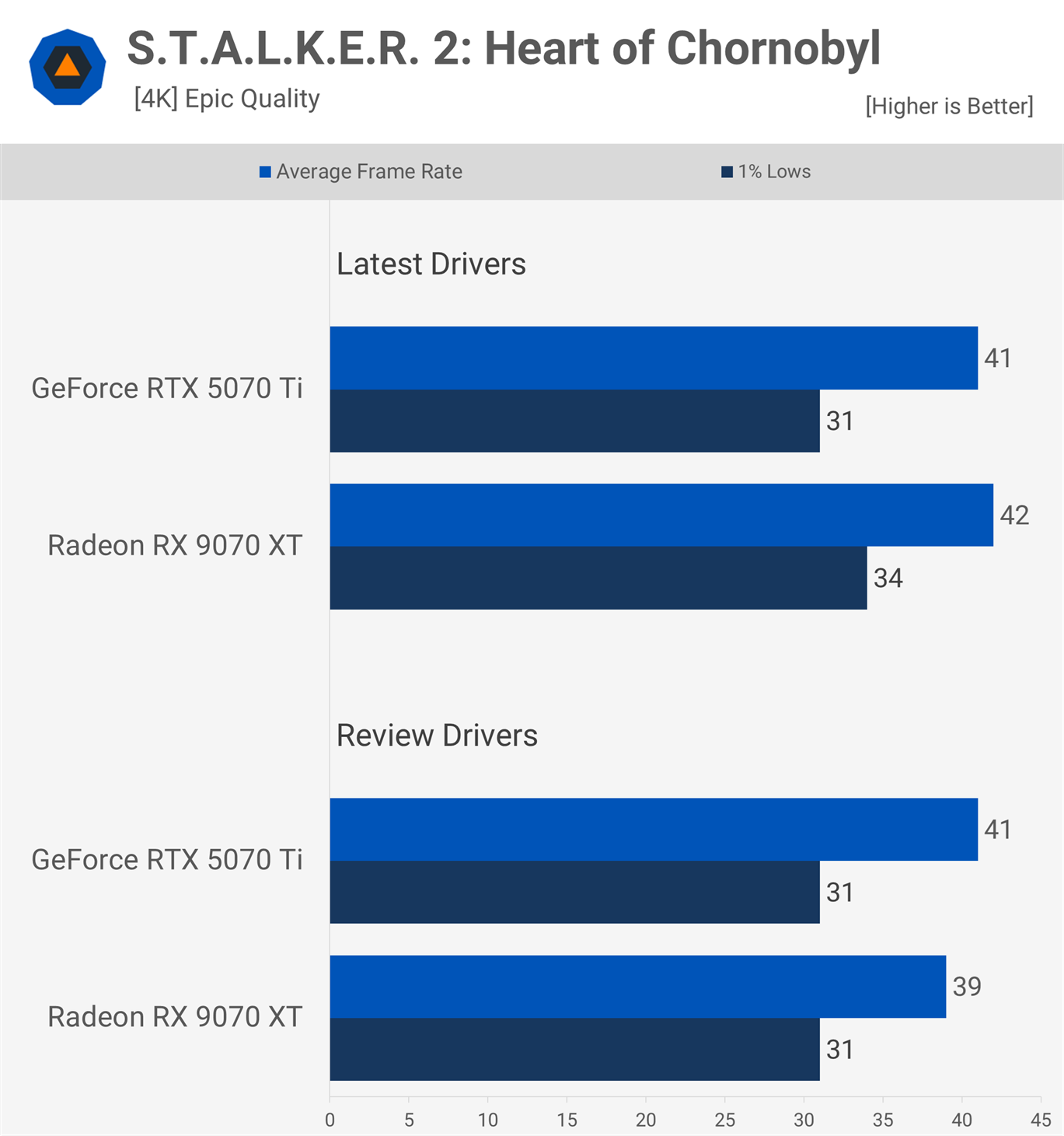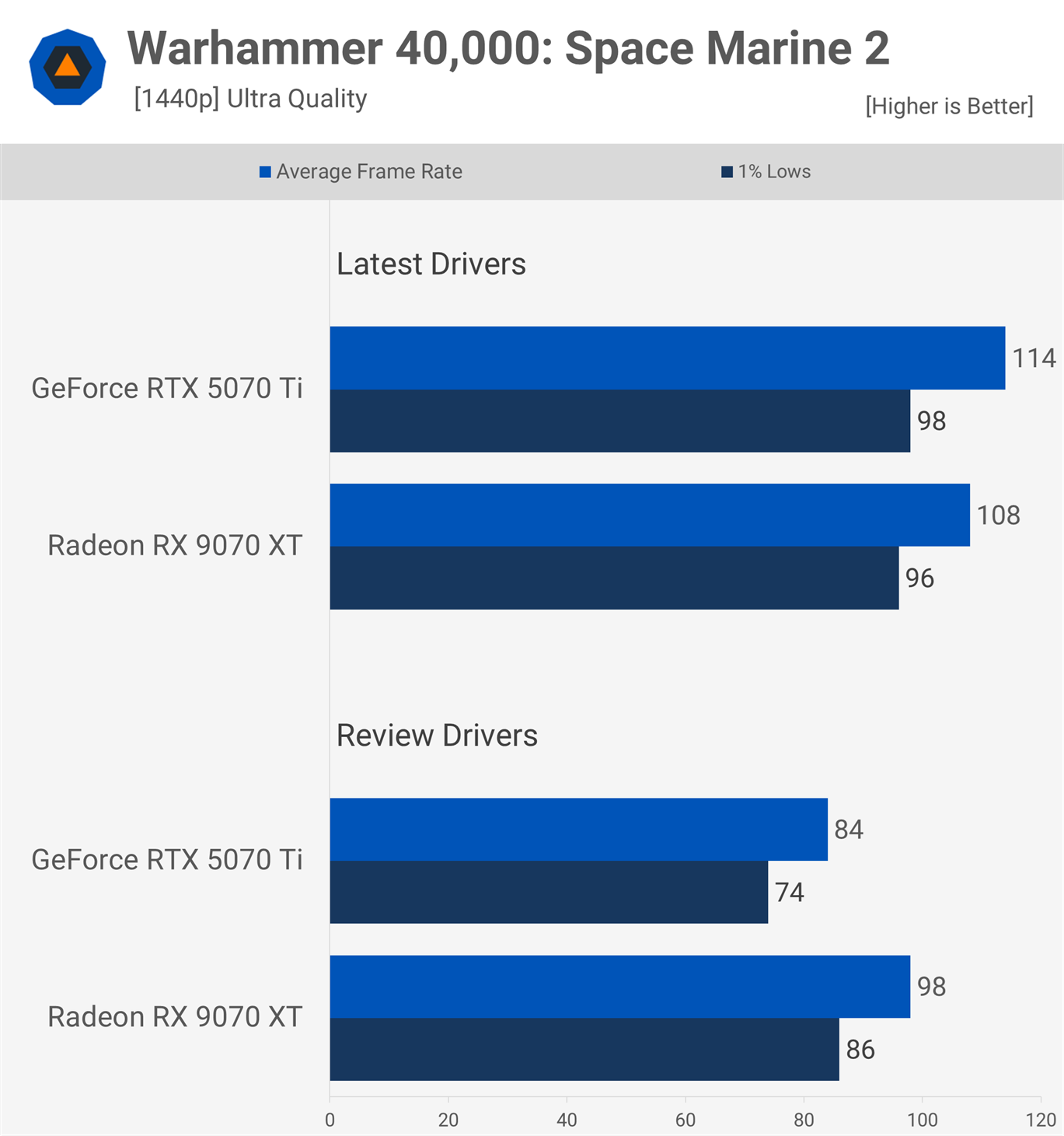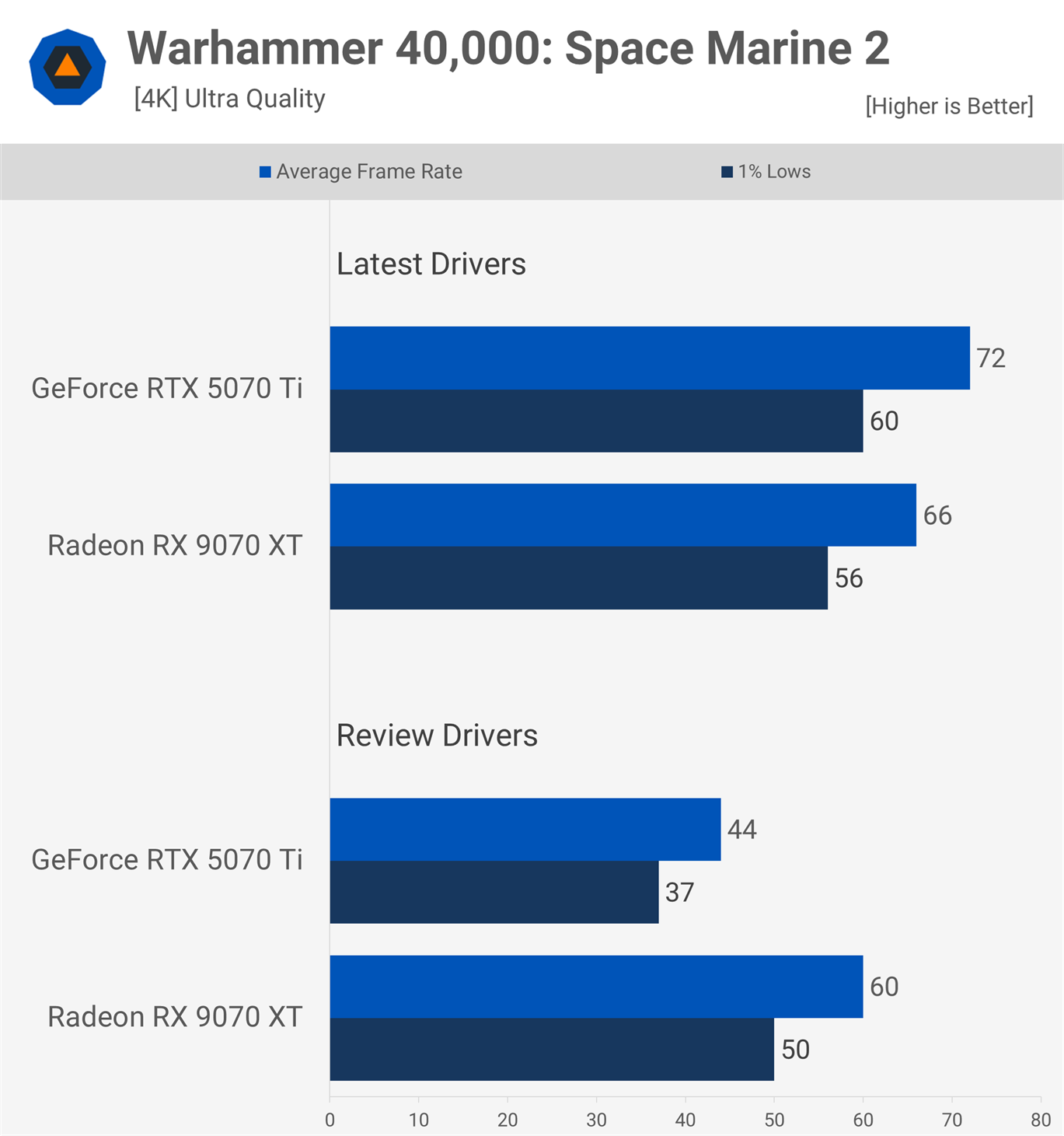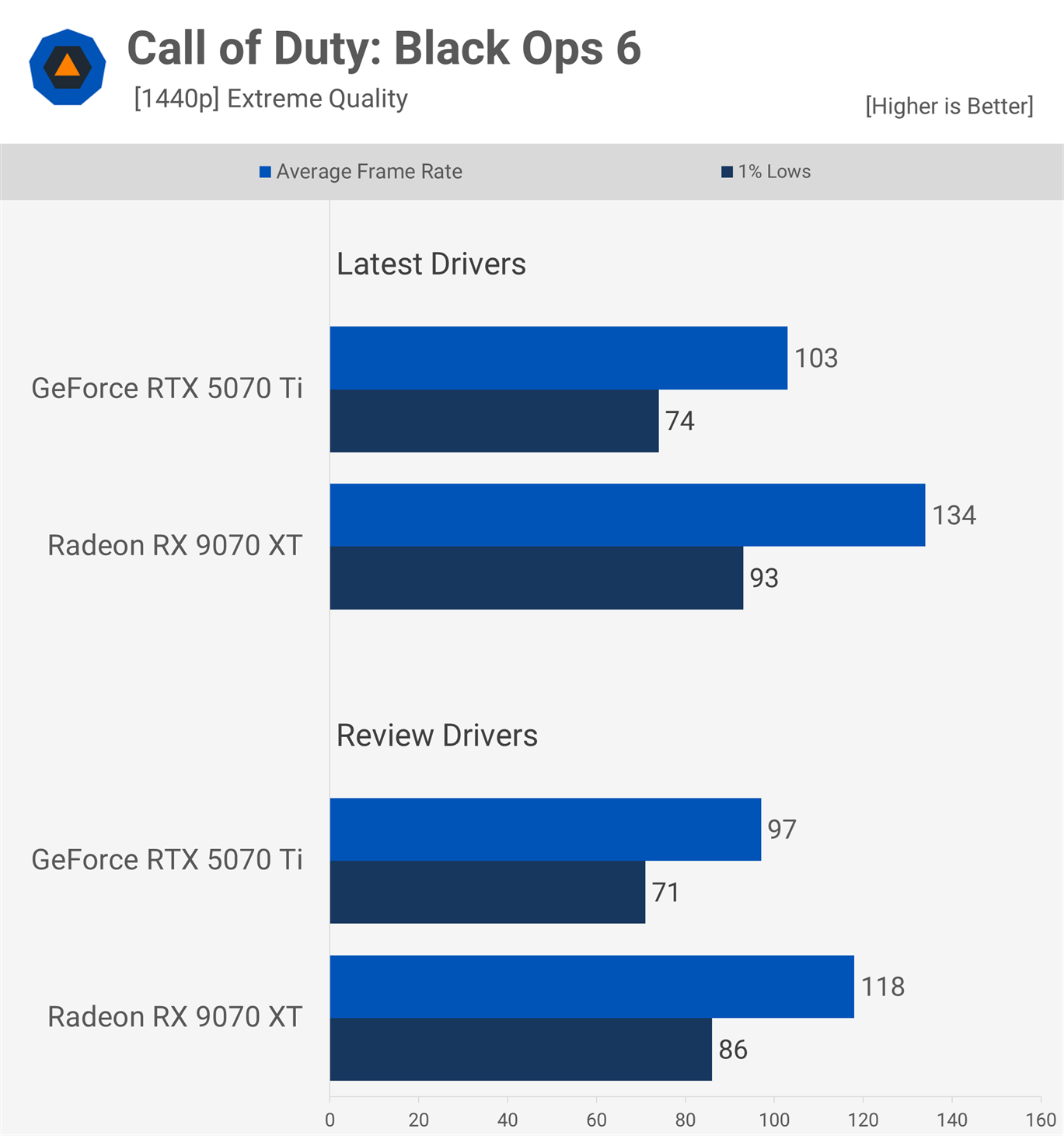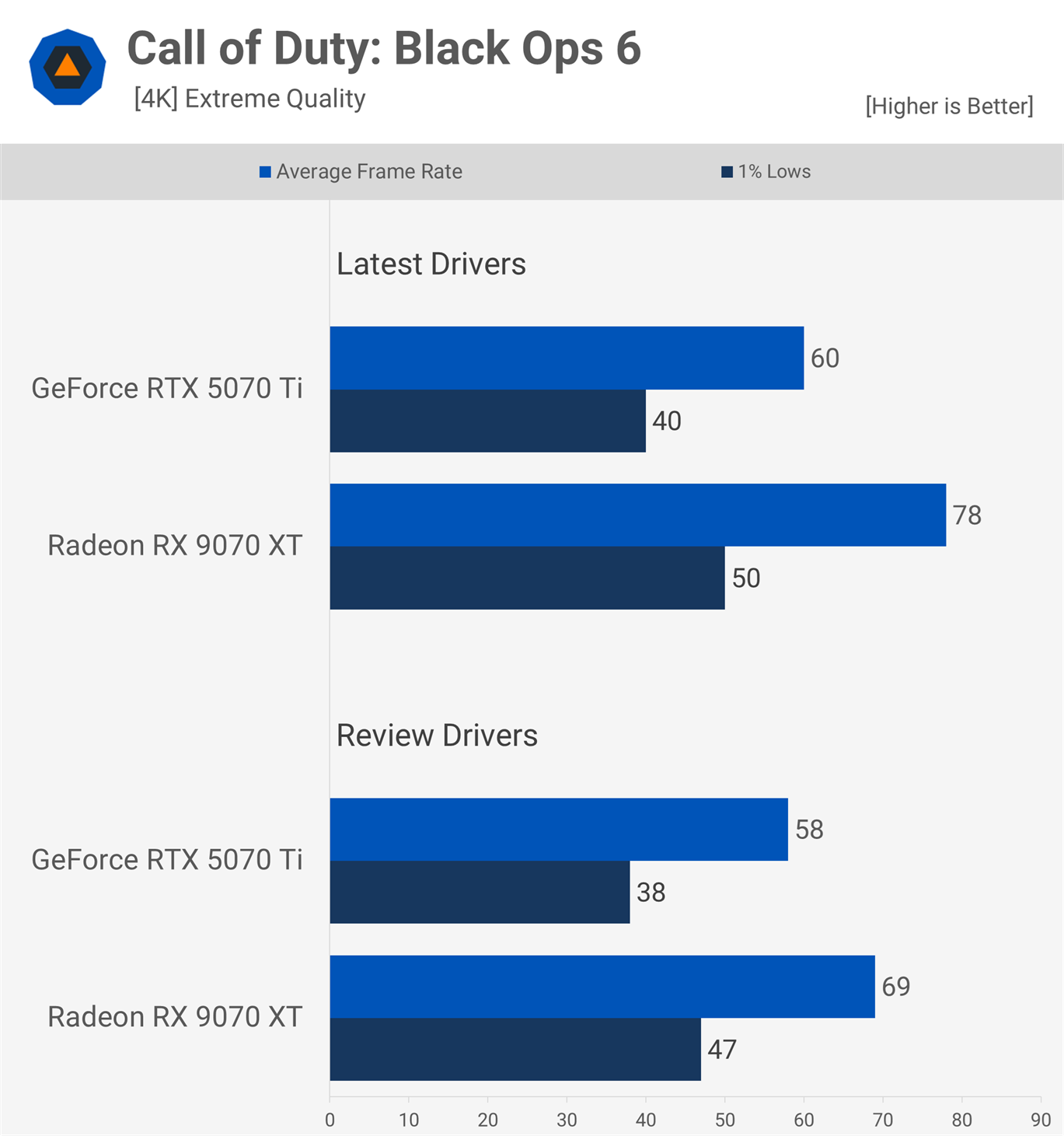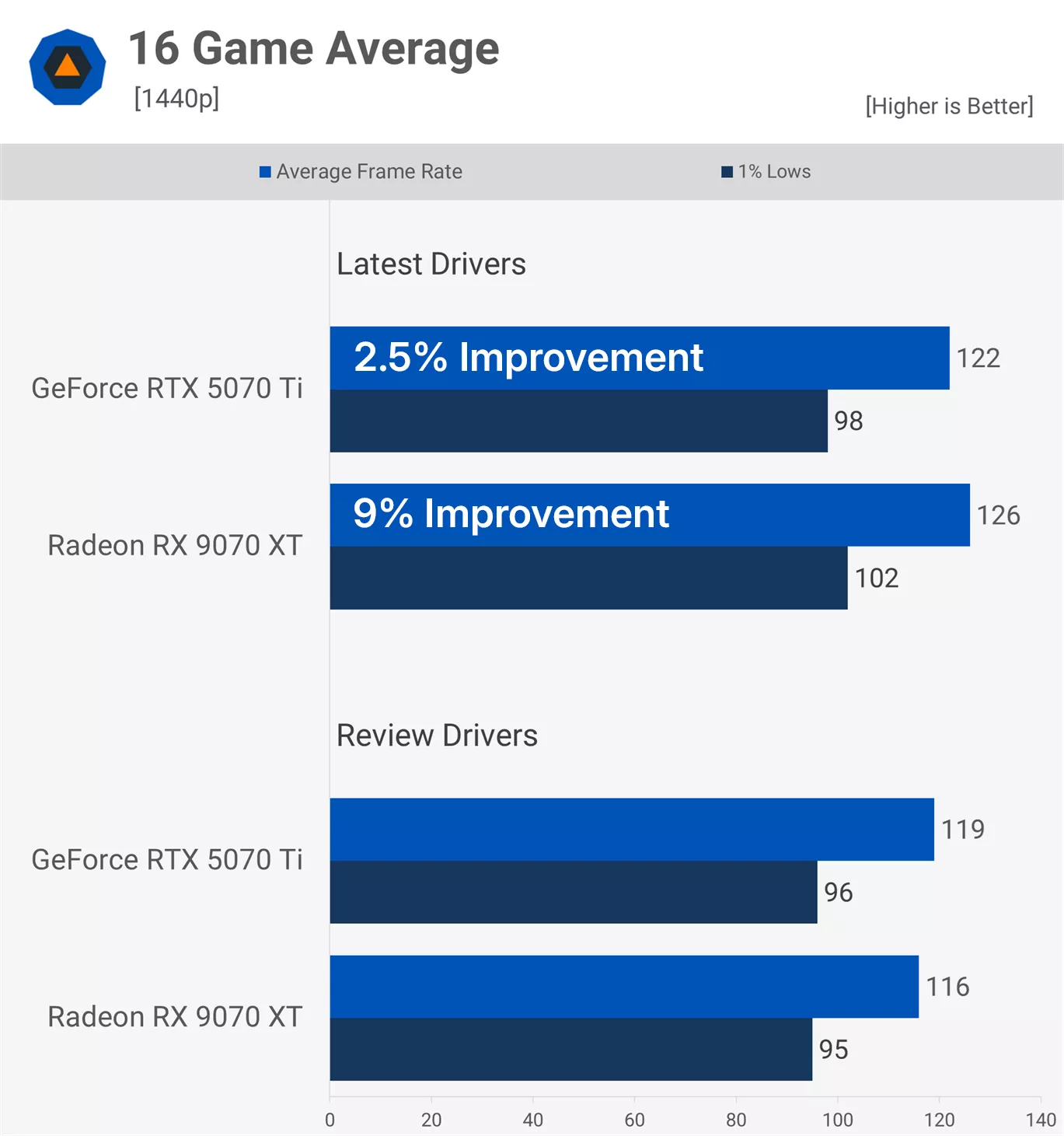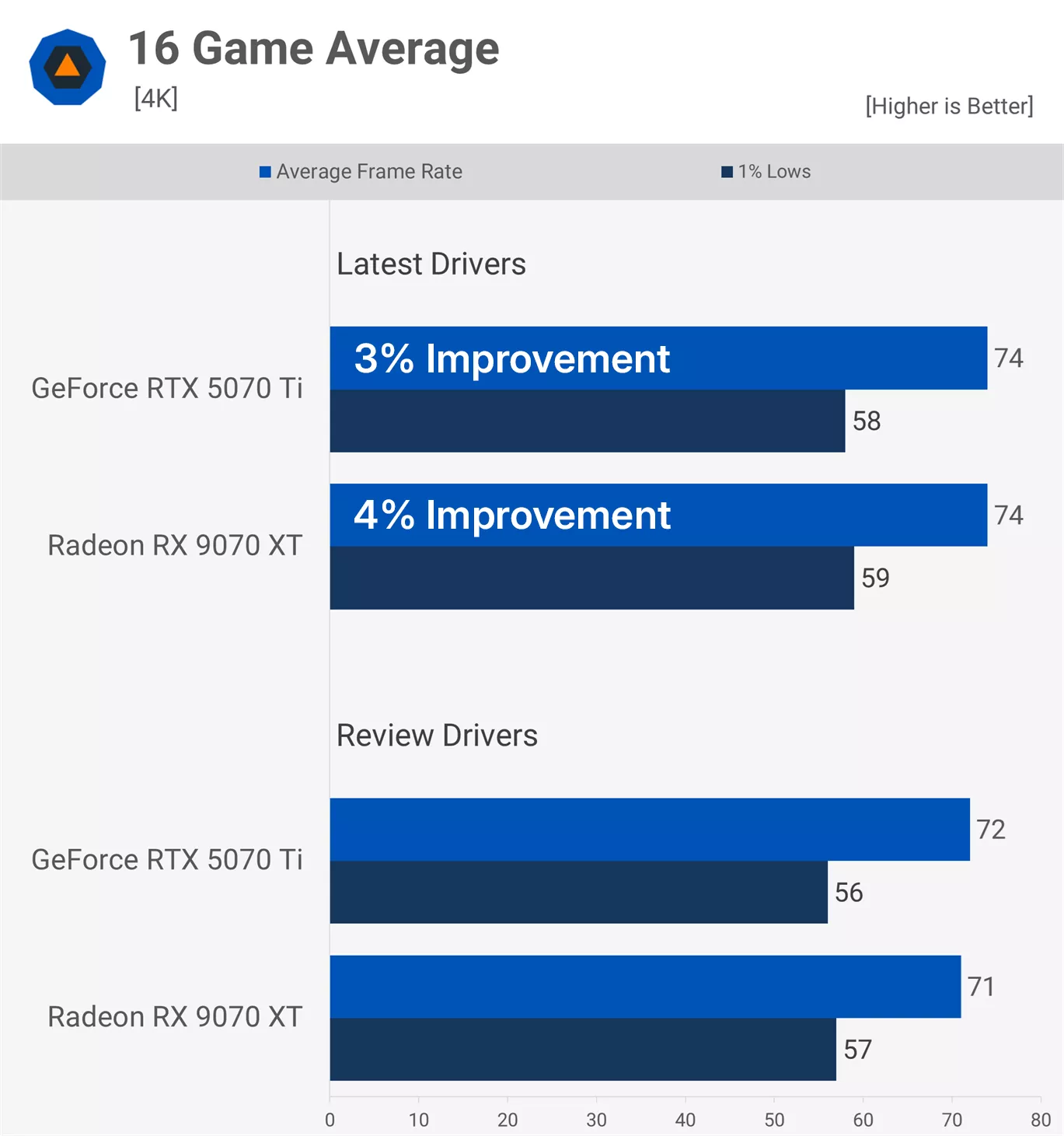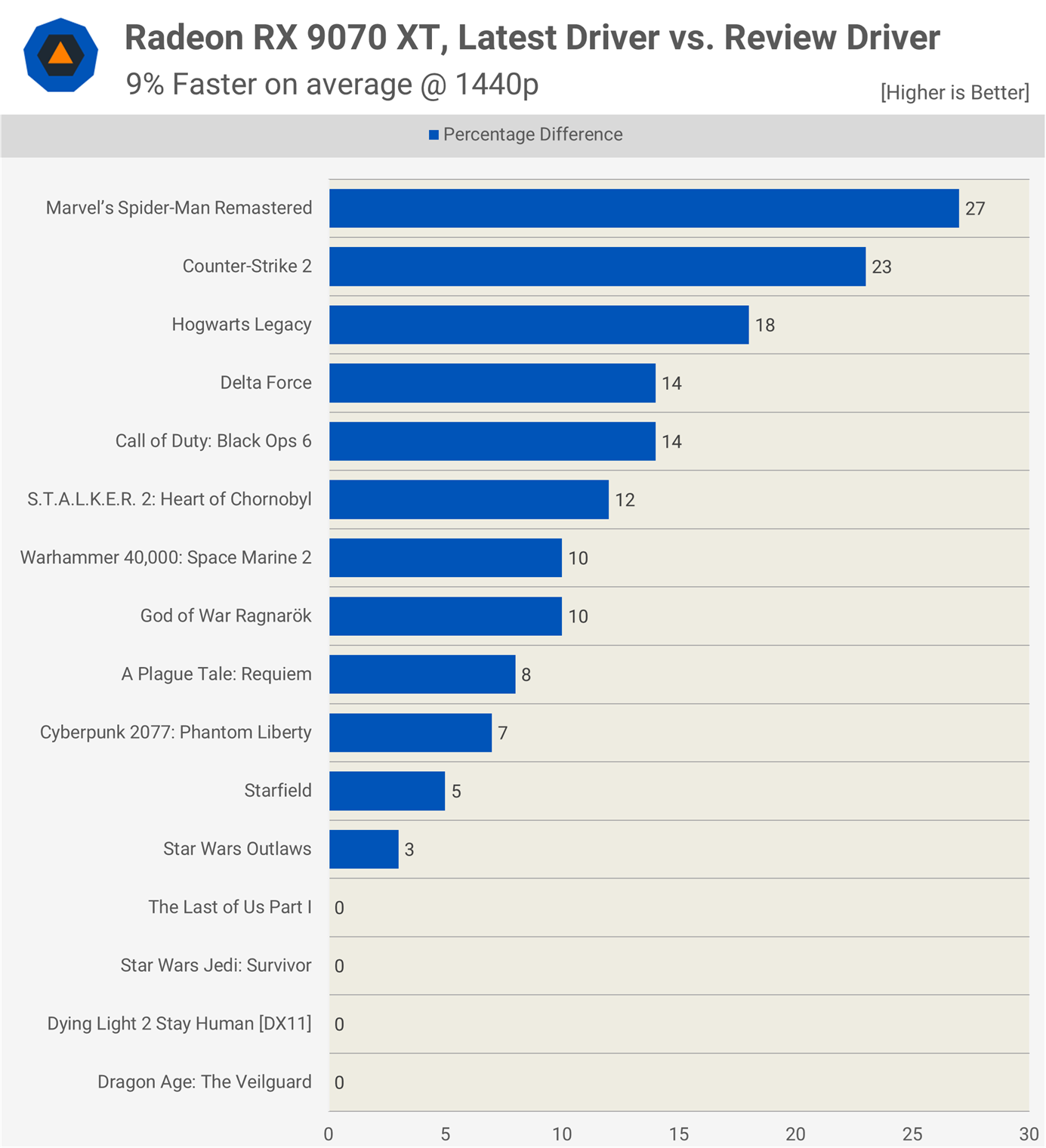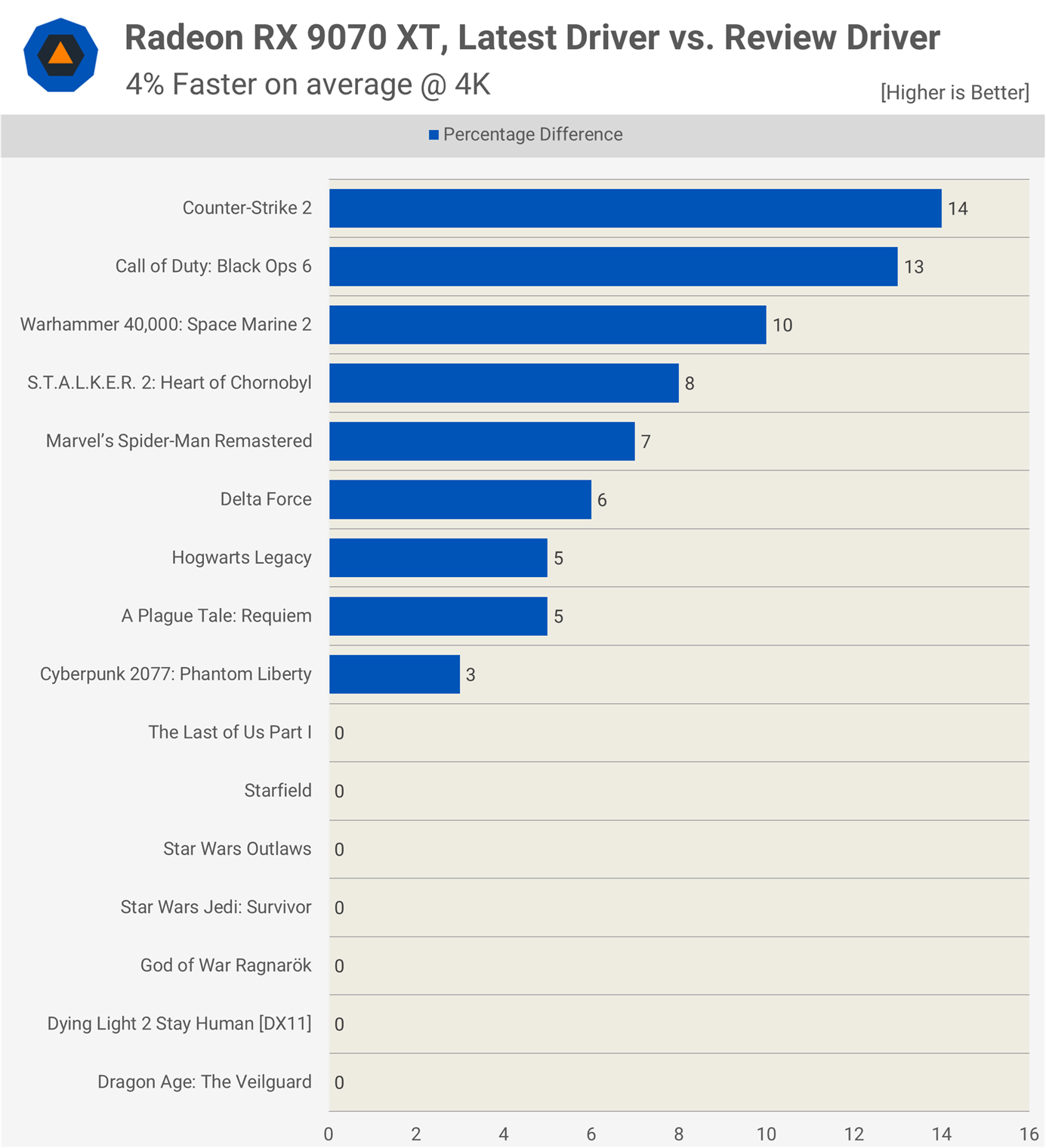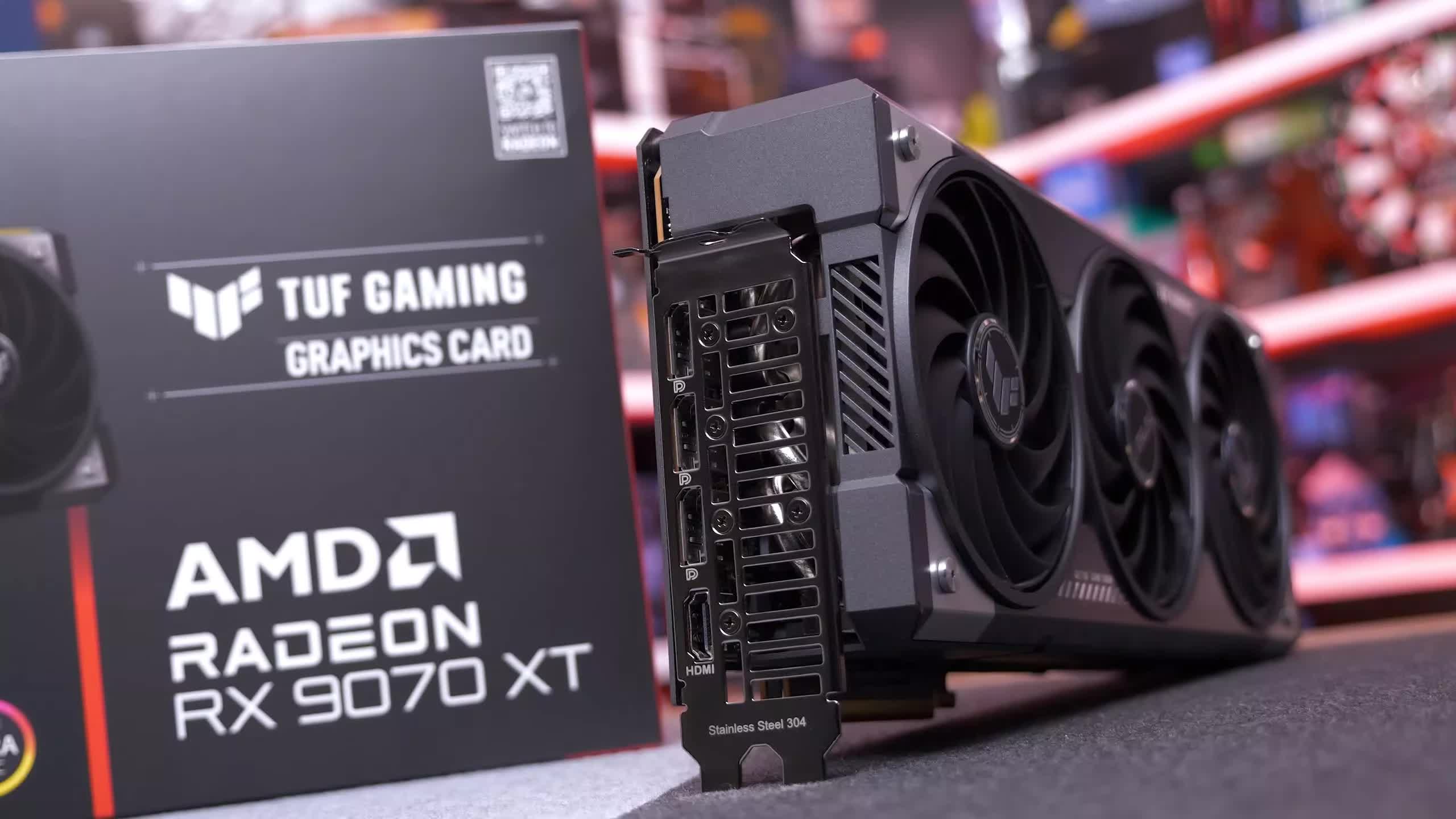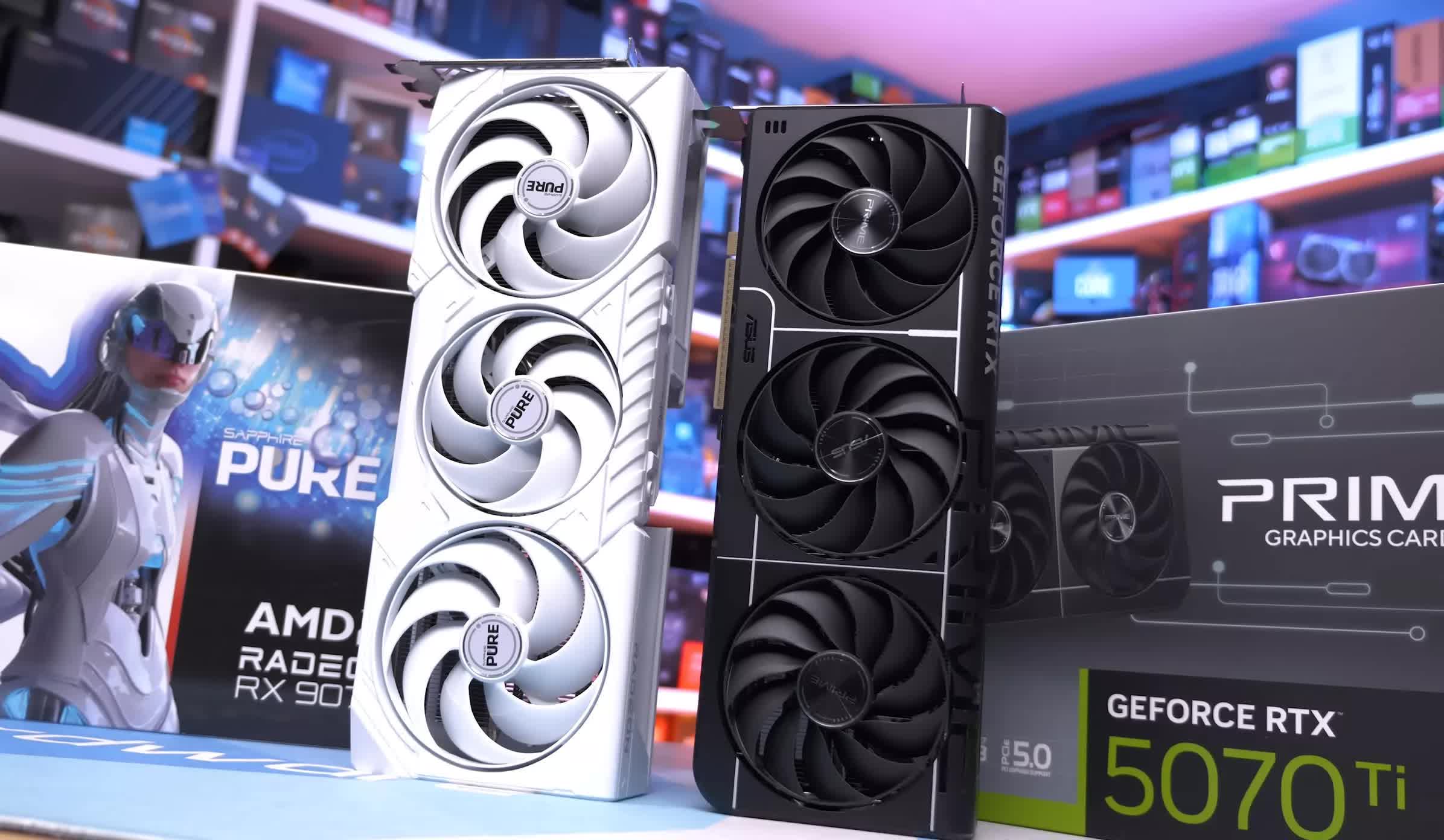With several driver updates and game patches now in the mix, today we are revisiting the Radeon RX 9070 XT to compare its performance using the latest drivers against the data we collected during our day-one review. We'll be retesting 16 games using the same settings from that original review, conducted about four months ago, to see how much performance has shifted – and more importantly, why.
On paper, the Radeon RX 9070 XT appears to be faster now than it was at launch, as suggested by early user reports. But are the gains coming from AMD's driver improvements, or have recent game patches boosted performance across the board?
To help answer that, we're including the GeForce RTX 5070 Ti in this comparison. If both GPUs have improved, the explanation likely lies with the games. If not, Radeon's drivers may be doing most of the heavy lifting. We're eager to find out.
The test setup is fairly straightforward. We're using the same 9800X3D system from our day-one review, paired with 32 GB of DDR5-6000 CL30 memory and the latest version of Windows 11. While the original review featured 18 games, we're only including data for 16 of them.
Marvel Rivals was excluded because the replay used for testing is no longer valid, and War Thunder was dropped due to stability issues affecting both Radeon and GeForce GPUs, which we plan to investigate further at a later time.
Aside from those changes, everything else remains the same. Let's dive into the data.
Benchmarks
Star Wars Jedi: Survivor
First up is Star Wars Jedi: Survivor. This game has not received an update this year, so any performance changes would likely be due to driver improvements. However, neither the 9070 XT nor the 5070 Ti has shown any change in performance compared to the original review. The latest drivers provided identical results at both 1440p and 4K, so we can move on.
A Plague Tale: Requiem
A Plague Tale: Requiem has not been patched in years, so any performance changes can be directly linked to driver updates. In this case, we are seeing just that. Previously, the 5070 Ti was 8% faster than the 9070 XT, but with the latest drivers, they are now performing equally, both averaging 122 fps at 1440p. The same is true at 4K, where the GeForce GPU was previously 5% faster. Now, both deliver 68 fps.
Cyberpunk 2077: Phantom Liberty
Cyberpunk 2077: Phantom Liberty has not been updated since January, well before the release of the 9070 XT. The performance improvements we are seeing here can therefore be attributed to drivers. In the original review, the 9070 XT and 5070 Ti delivered nearly identical performance. With updated drivers, the Radeon GPU is now 4% faster. While this is a minor advantage, overall performance remains very similar. Interestingly, the 5070 Ti also improved by 4%, indicating that both GPUs have benefited from driver updates.
At 4K, the gains for GeForce are more noticeable. The 5070 Ti now matches the 9070 XT, thanks to a 9% increase in 1% lows.
Dying Light 2 Stay Human
Dying Light 2 Stay Human has received a few game updates, but performance remains consistent with the review data. The latest drivers show less than a 2% deviation at both 1440p and 4K.
Dragon Age: The Veilguard
Dragon Age: The Veilguard has not been updated since the launch of the 9070 XT, and AMD has not delivered any performance improvements through drivers. We observed a 3% increase for the 5070 Ti at 1440p, though it is difficult to determine whether this change is due to drivers or testing variation. At 4K, performance remains unchanged, with less than a 2% difference from the original data.
Marvel's Spider-Man Remastered
Marvel's Spider-Man Remastered has not been updated this year, so the performance improvements seen with the 9070 XT can be attributed solely to driver updates. We recognize that the gains here are surprising, so we verified the data multiple times. On the other hand, the 5070 Ti has somehow become 7% slower, and this was also double-checked for accuracy.
The most remarkable result is the 27% performance increase for the 9070 XT, jumping from 169 fps to 214 fps. This is a dramatic improvement. Previously, the 9070 XT was 8% slower than the 5070 Ti. It is now 24% faster, a difference similar to what we typically see in Call of Duty for Radeon GPUs.
At 4K, the picture changes slightly. The GeForce GPU showed no performance change, while the 9070 XT saw a more modest 7% increase. This still means that whereas both GPUs delivered similar results previously, the 9070 XT is now 7% faster.
Hogwarts Legacy
Next up is Hogwarts Legacy. This game has received a few updates this year, though we do not believe any performance-related patches have been released since the launch of the 9070 XT. What we can confirm is that since collecting our original review data, the 5070 Ti has seen no change in performance, while the 9070 XT has experienced a substantial 18% uplift, increasing from 130 fps to 153 fps. That is a significant improvement, especially considering the Radeon GPU was already slightly faster in this title. It now holds a 21% performance advantage.
Oddly, the large performance gain seen at 1440p does not carry over to 4K. Here, we observed only a 5% improvement. Still, the 9070 XT was 10% faster than the 5070 Ti, which is a solid lead. It is also worth noting that the 1% lows for the Radeon GPU were nearly 30% higher.
The Last of Us Part I
The Last of Us Part I showed no performance change for the 9070 XT at 1440p. Interestingly, the 5070 Ti became 4% slower. While this drop is not dramatic, it now places the 5070 Ti roughly on par with the 9070 XT. At 4K, performance remained essentially unchanged for both GPUs.
Star Wars Outlaws
Star Wars Outlaws showed a minor 3% improvement for the 9070 XT at 1440p, bringing it level with the 5070 Ti. At 4K, however, performance was unchanged. Overall, both GPUs performed similarly, with the 5070 Ti maintaining a slight edge.
Starfield
Starfield showed a modest performance increase for the 9070 XT at 1440p, with a 5% boost taking the average frame rate from 79 fps to 83 fps. Meanwhile, the 5070 Ti dropped by 2 fps, also resulting in 83 fps.
At 4K, results remained mostly unchanged, with both the 9070 XT and 5070 Ti averaging 55 fps.
Delta Force
Delta Force is another example where the 5070 Ti's performance slipped slightly, dropping 3% to 168 fps. The 9070 XT, on the other hand, saw a significant 14% increase, rising from 160 fps to 183 fps. This means that while it was previously 8% slower than the 5070 Ti, it is now 10% faster – a major reversal.
At 4K, the 5070 Ti was previously 7% faster. With the recent improvements to the 9070 XT, both GPUs now deliver identical performance.
God of War Ragnarök
God of War Ragnarök showed a similar trend. In this case, the 5070 Ti improved by 2.5%, but the 9070 XT saw a larger 10% boost, making it 9% faster overall. Despite these gains at 1440p, performance at 4K remained unchanged.
Counter-Strike 2
In Counter-Strike 2, the 5070 Ti delivered nearly identical results with the latest drivers compared to our review data. The 9070 XT, however, improved significantly, with a 23% performance boost that now puts it ahead of the 5070 Ti. Previously, the Radeon GPU was 10% slower; now, it is 10% faster.
At 4K, the 9070 XT saw a 14% uplift, but this was not enough to surpass the 5070 Ti, which remained 4% faster in average frame rate. Still, the 9070 XT did produce stronger 1% lows.
Stalker 2: Heart of Chornobyl
Stalker 2 has received an update since our original testing, though GeForce performance remained unchanged. The same cannot be said for the 9070 XT, which saw a 12% boost, increasing from 58 fps to 65 fps. This allowed it to slightly edge ahead of the 5070 Ti, especially in terms of 1% lows. Overall, both GPUs now deliver a similar experience.
At 4K, an 8% increase for the 9070 XT allowed it to match the 5070 Ti, with slightly better 1% low performance.
Warhammer 40,000: Space Marine 2
Space Marine 2 was updated in April, and the patch notes mention "slightly improved performance." However, this was not reflected in 5070 Ti results – until Nvidia addressed a known driver issue. We confirmed this issue with Nvidia, and with the latest drivers, the 5070 Ti is now 36% faster at 1440p. The Radeon GPU also saw a 10% improvement, and overall performance is now similar. However, the tables have turned, with the 5070 Ti now 6% faster instead of being 14% slower.
The Nvidia driver issue was more pronounced at 1440p, where the original review showed the 5070 Ti averaging just 44 fps, compared to 60 fps for the 9070 XT, giving the Radeon GPU a 36% lead. With the updated drivers, the 5070 Ti now averages 72 fps, a 63% increase, while the 9070 XT is 10% faster at 66 fps. This gives Nvidia a 9% lead.
Call of Duty: Black Ops 6
Finally, we have Call of Duty: Black Ops 6. Here, both GPUs have improved since the original review. The 5070 Ti gained a modest 6%, while the 9070 XT became 14% faster. This pushes its lead from 22% to 30%, marking a significant performance advantage.
At 4K, the pattern continues. The 5070 Ti improved by 3%, while the 9070 XT gained a much more substantial 13%. As a result, the Radeon GPU is now 30% faster using the latest drivers.
16 Game Average
Across the 16 games tested, the Radeon 9070 XT saw an average performance improvement of 9% with the latest game and driver updates. In comparison, the 5070 Ti improved by just 2.5%.
This means that while the 5070 Ti was previously 2.5% faster than the 9070 XT based on our review data, the 9070 XT is now 3% faster with the updated drivers. That represents a notable shift, but overall, both products remain highly competitive and continue to deliver very similar performance.
The 4K results, on the other hand, show minimal change. The 9070 XT improved by 4%, and the 5070 Ti by 3%, resulting in effectively identical performance at 4K. There was already little difference between the two at this resolution, so these updates do not meaningfully change the standings.
Here is a breakdown of where the 9070 XT did and did not gain performance. The largest improvements were seen in Spider-Man, Counter-Strike 2, Hogwarts Legacy, Delta Force, Call of Duty, Stalker 2, Space Marine 2, and God of War Ragnarök, all showing gains of 10% or more.
Only six of the 16 games tested saw gains of 5% or less. These titles included Starfield, Star Wars Outlaws, The Last of Us Part I, Jedi: Survivor, Dying Light 2, and Dragon Age.
At 4K, there were far fewer significant gains. Only three games showed double-digit improvements, and 10 of the 16 titles recorded gains of 5% or less. In fact, seven games showed no change at all.
FineWine in Action, but Cost Remains King
It appears that, at lower resolutions, early RDNA4 drivers were not as efficient as they could have been. This would explain why the Radeon 9070 XT often fell behind Nvidia's 5070 Ti at 1440p, despite being competitive at 4K. That was an unexpected outcome, especially considering the 5070 Ti uses GDDR7 memory, offering 40% more memory bandwidth. One might have expected the Radeon GPU to perform better at lower resolutions, not worse.
As impressive as these gains may be, they do not dramatically alter the landscape. Previously, the 5070 Ti and 9070 XT were evenly matched, and that remains true today. Overall, they should offer a similar gaming experience.
As before, pricing will likely be the deciding factor. At Newegg, the 9070 XT is available for $700. While that is still above its $600 MSRP, prices are gradually trending in the right direction. The 5070 Ti, however, appears to be back up to $900, representing an almost 30% premium. It is hard to imagine why anyone would choose to pay that.
In Australia, PC Case Gear shows a similar situation. The 9070 XT is currently in stock for $1,200 AUD, while the 5070 Ti is priced at $1,600 AUD, making it 33% more expensive. The only caveat is availability. There are four 5070 Ti models in stock at that price, while only one 9070 XT is available: the PowerColor Hellhound. The next cheapest option, the Sapphire Pulse, is priced at $1,300 AUD.
It is encouraging to see the 9070 XT improving as drivers mature, reinforcing the "FineWine" narrative. That said, RDNA3 largely undermined that idea due to the lack of FSR4 support, but that is a discussion for another time. As always, we will continue to track the progress of these GPUs with future benchmark content.
